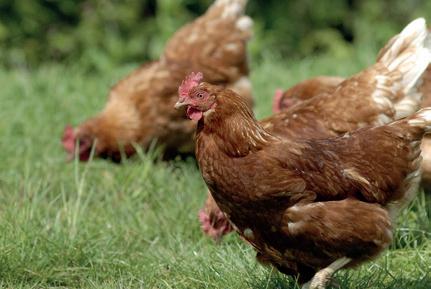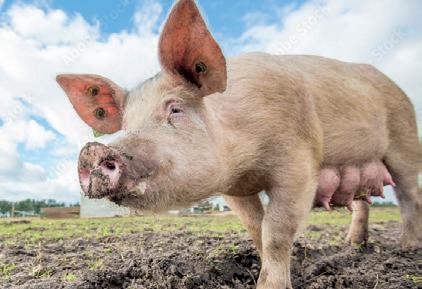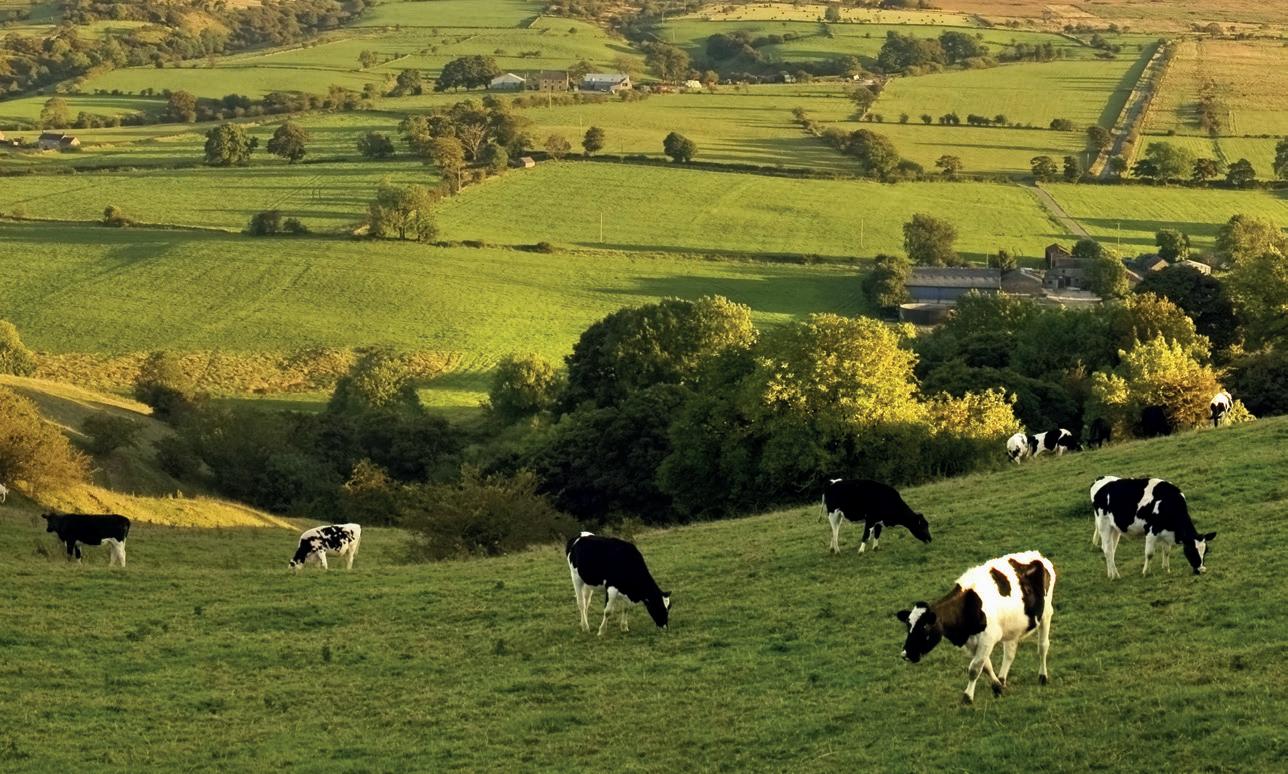









Noventum Power Limited is one of the leading large-scale renewable energy companies in the UK














Noventum Power Limited is one of the leading large-scale renewable energy companies in the UK



We will work with you, helping you towards developing your land into an income generating asset that can provide additional income streams for your business.
The benefits include:
•Diversifying revenue streams away from farming or other land uses
•Deploying solar power or wind turbines on your available land

•Maintaining agricultural use through sheep grazing when possible
We are looking for sites between 50 acres and 200 acres, ideally close to a nearby grid connection
Land should be relatively flat and Grade 3 or lower
Well screened by hedges and a good distance from residential property
Not in a valued landscape or near historic buildings
We have a team of experienced, highly proficient renewable energy experts. They have an extensive record which encompasses the following:
Land Acquisition
Investment
Construction
Energy Storage
Planning and Permitting Grid Solutions
Power Engineering & Grid Connections
Operation and Maintenance
If you would like to discuss how to potentially earn a secure and long-term predictable income stream from your land, please get in touch and contact us on:
89562

EDITORIAL
Editor:
Johann Tasker | T: 07967 634971
E: johann@ruralcity.co.uk
Design:
Mark Shreeve | T: 01502 725839
E: mark.shreeve@micropress.co.uk
Advertisement production:
Jade Soanes | T: 01502 725840
E: jade.soanes@micropress.co.uk
ADVERTISING SALES
Chloe Miller | T: 01502 725844
E: chloe.miller@micropress.co.uk
Danny Lewis | T: 01502 725862
E: danny.lewis@micropress.co.uk
Mat Roffey | T: 01502 725854
E: mat.roffey@micropress.co.uk
Mark Tait | T: 01502 725803
E: mark.tait@micropress.co.uk
It's often been said that people with full stomachs fail to realise the importance of farmers. Only when people go hungry – or can't get the food they want – do they start to take a keen interest in where it comes from.
The media furore which followed last month's tomato shortage is a perfect example. All of a sudden, consumers wanted to know why supermarket shelves were empty – and when they would be full again.
The government, of course, blamed someone else. Or rather said the shortage was due to bad weather in Morocco and Spain – both countries which supply the UK with tomatoes during the cold winter months.
The NFU has been warning for months that this winter would be particularly precarious. Not because of the weather, but because rampant agri-inflation has seen input costs increase far higher than any increase in the value of farm output.

Many farmers have long suspected that senior politicians don't take food security and self-sufficiency seriously enough. Now growers and livestock producers could see those fears become reality. Rather than backing British farmers, it seems the government would prefer to import food from abroad.
Midland Farmer is a controlled circulation magazine published monthly for farmers and growers in the Midlands (Derbyshire, Herefordshire, Leicestershire, Lincolnshire, Northamptonshire, Nottinghamshire, Shropshire, Staffordshire, Warwickshire, West Midlands and Worcestershire) or companies supplying goods and services to the sector. To be included on the circulation list, a farmer must have a minimum of 70 acres of land, or 50 dairy/beef stock, or 50 breeding sows/250 growing stock, or 15,000 laying hens/broiler chickens. Intensive horticulture units are required to have a minimum of two hectares.
If you no longer wish to receive this magazine, please email your name, address and postcode as it appears on the wrapper to adam.gunton@micropress.co.uk
© Countrywide Publications 2023

Published by Countrywide Publications, Fountain Way, Reydon Business Park, Reydon Suffolk IP18 6DH

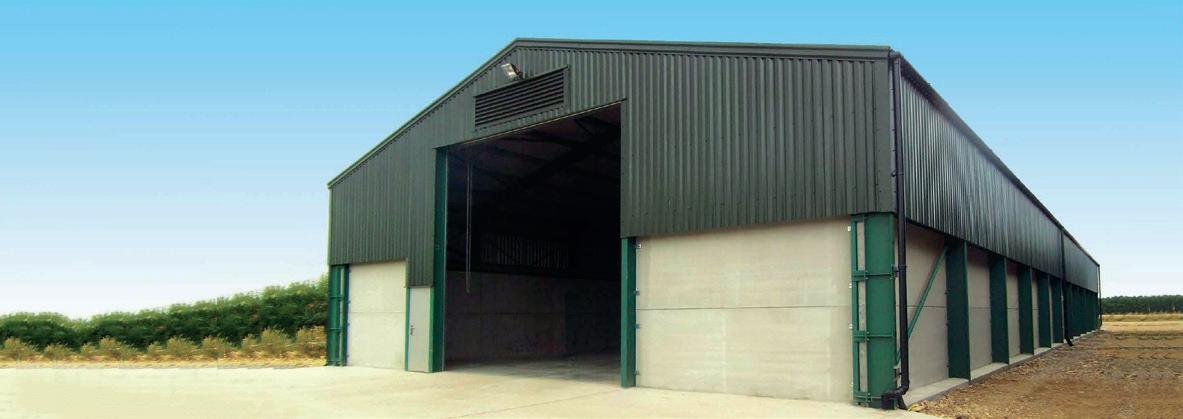
T: 01502 725800
Printed by Micropress
Printers Ltd T: 01502 725800
That's true – at least partially. But like many things the government says, it is more complicated than that. And the reasons for the shortage of tomatoes, cucumbers and other crops on supermarket shelves, deserve closer scrutiny.
We could, of course, grow salad crops allyear-round in this country. But gas costs have soared over the past year, making it too expensive to heat glasshouses and still make a profit at the sort of prices consumers are willing to pay for fresh produce.
Witness how far farming is down the pecking order when in UK trade deals with other countries. Even former Defra secretary George Eustice has conceded that the recent trade deal Australia had given too much awary in return for too little.
These are uncertain times. If the government really wants to maintain UK food security, it should back British farmers and ensure they are able to produce food profitably at a price consumers can afford – not rely on cheap imports.
Johann Tasker EditorThe clock is ticking for the government to back British farmers and ensure they can play their part in feeding the world, industry leader Minette Batters has warned.
Delivering the opening address at last month's NFU Conference, Ms Batters outlined a range of challenges faced by growers and livestock producers – and warned that the government must do more to support the sector.
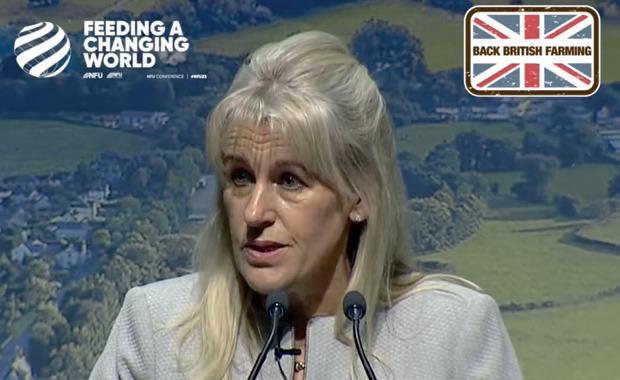
“More often than not – it has been incredibly hard getting government to back up its rhetoric with concrete actions,” she told NFU Conference delegates on 21 February in Birmingham.
“The time is nearly up for government to demonstrate its commitment to food and farming in our great country – not just by saying they support us, but by showing us they do.
“I won’t let the opposition off the hook either, I believe the rural vote will be crucial in the next election."
A prosperous farming sector was built on three cornerstones, said Mrs Batters. They were boosting productivity,
protecting the environment and managing volatility – and any government should use them to underpin its farming policy.
“The clock is ticking,” said Mrs Batters.
“It’s ticking for those farmers and growers facing costs of production higher than the returns they get for their produce. It’s ticking for the country, as inflation remains stubbornly high, and the affordability and availability of food come under strain.
“It’s ticking for our planet, as climate change necessitates urgent, concerted action to reduce emissions and protect our environment. And it’s ticking for government – to start putting
Challenges highlighted by the NFU include labour shortages and high energy prices – as well as the phase out of the basic payment scheme.
Ag-inflation appears to have slowed. But input cost rises for many sectors continue to outstrip increases in the price consumers are paying for food – and the value of output as it leaves the farm gate.
Agricultural input costs have having risen almost 50% since 2019, says the NFU. UK egg production has fallen to its lowest level in nine years. In 2022, UK egg packers packed almost a billion fewer eggs than they did in 2019.
NFU president Minette Batters said: “This
was also the year that the potential impact of climate change really hit home. The extraordinary temperatures we experienced in July topped the previous record by almost a degree and a half.
“While many parts of the country have experienced huge amounts of rainfall recently, impacting farming operations over autumn and winter, some counties still remain in official drought status.
“Despite all this, NFU members and the farmers and growers of Britain continued to bring in the harvest – to produce the nation’s food and to keep the country fed through tough times.”
meaningful, tangible and effective meat on the bones of its commitments.”
Those commitments included promoting domestic food production, properly incentivising sustainable and climate friendly farming, putting farmers and growers at the heart of UK trade policy, and guaranteeing food security.
Explaning that there were three key lessons to be learned from the past year, Mrs Batters said: “It really is time to back British farmers and back British food.”
The first lesson was that the UK had an opportunity, and a duty, to get the best out of our maritime climate as the global population continued to rise – and parts of the planet became less suited to food production.
Secondly, in the face of climate change, British farmers should be unwavering in their commitment to achieving net zero and contributing to our energy security through on-farm renewables generation.
“Thirdly, we should never take our food security for granted,” said Mrs Batters. But the fact remained, that volatility, uncertainty and instability were the greatest risks to farm businesses in England and Wales.
“Critically, those consequences will be felt far beyond farming, they will be felt across the natural environment, and in struggling households across the country.”
Politicians must demonstrate commitment to farming, says Minette Batters
It really is time to back British farmers
“
February was a funny month, the end of January left the ground a bit too wet for us to start draining so we started on the demolition of an old Nissen hut for one of our neighbours.



We even treated ourselves to a new grab that fits both our 13t and 21t excavators.


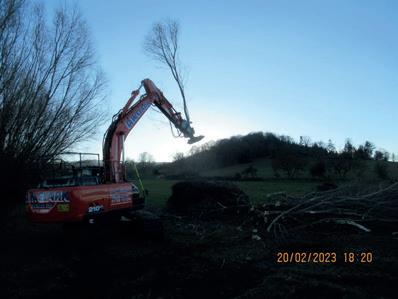

We did have a weeks drainage on the exercise field for the Dogs Trust at Kenilworth. It was laying very wet on one side so around 400 metres of 100mm land drain were installed to sort this out.
It gave us the opportunity to dust off the Mastenbroek 10/12 trencher as the site was tad small for the 15/15.
We also had to break out the tree shears for a job pollarding Willow Trees near Elmley Castle.
It has been a varied month but we do have the equipment and expertise to carry out many different tasks as well as land drainage. As we always say, “we are so much more than just drainage”.


When dairy farmers Emyr and Evelyn Wigley retired, they planned to travel, spend holidays in their caravan and go on walking adventures in the British countryside – all things they had put off whilst devoting their time to farming.
Tragically, soon into their retirement, Evelyn was diagnosed with ovarian cancer and she passed away aged 69 in 2015.
Mr Wigley, who lives at Deytheur, Llansantffraid, on the Powys-Shropshire border, immediately pledged to do something positive as a tribute to his wife – to combat ovarian cancer, which he describes as an “evil disease”.
Because of the couple’s long connection with the farming community, he also wanted to support farmers in
need. And in 2016, he established the Old Stackyard British Blues, a small, closed breeding herd of pedigree British Blue cattle.
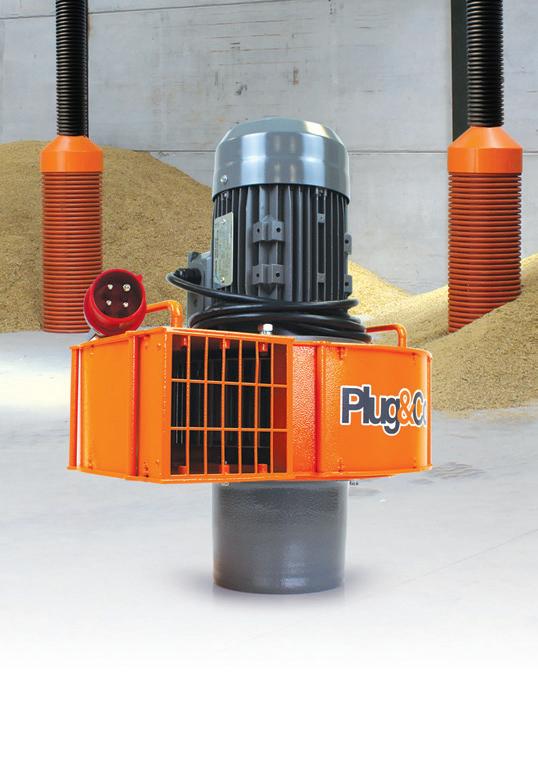
It is the only charity herd of its type in the UK, as all the money raised from the sale of the cattle over the past seven years has been shared between Ovarian Cancer Action and the Royal Agricultural Benevolent Institution (RABI).

To date, Mr Wigley has raised more than £121,000 for the charities by selling cattle from the herd and books he has written, thereby raising awareness and educating people about ovarian cancer and supporting farmers in their time of need.
In another twist of fate, 78-year-old
Emyr was seriously injured by one of his bulls while preparing it for a sale in Carlisle last month. He is lucky to be alive with a badly injured leg and broken ribs after the animal crushed and trampled him.
His niece, Laura Pritchard, who has helped with admin since the herd was established, rescued Mr Wigley from the pen where he was attacked. And due to his injuries, he has now decided to sell his herd of 33 cattle.
What started as a small initiative with a big ambition to fulfil a dream will end at Shrewsbury Auction Centre on 4 March when auctioneers Halls sell the herd in the company’s annual sale of British Blue Cattle. Mr Wigley hopes to raise £100,000 for the charities.
The charity project has exceeded his expectations, he explains. “Evelyn and I built up a dairy herd and we managed to be successful only by hard work and much self-sacrifice, with the business needs always coming first.
“Our plans to travel and to enjoy caravan holidays and walking in the beautiful British countryside, which we both loved, were put on hold until our retirement. It was a devastating blow to learn in the first few years of our retirement
She was a very special lady
research charity, this amazing and generous support has allowed us to focus on fuelling the breakthroughs we need in order to save the lives of more women –mothers, daughters, sisters and wives.
“Mr Wigley is possibly our first and last supporter who has sold pedigree cows to raise funds, but his incredible inventiveness, enthusiasm and sheer hard work has made a big difference to what we do at Ovarian Cancer Action.



“To have raised £122,000 to support both our charity and RABI is exceptional, and it is with sadness and huge gratitude that we approach this final sale. This sale is hoped to raise enough to fund a specialist researcher for an entire year.”

RABI provides local support to farming communities across England and Wales. Established in 1860, the charity offers guidance, financial support, practical care to farming people of all ages for generations and mental health counselling either face-to-face or over the telephone. RABI’s freephone helpline is available 24/7 on 0800 188 4444.
To donate to Ovarian Cancer Action, visit www.donate.ovarian.org.uk. To donate to RABI, visit www.rabi.org.uk/ donate/

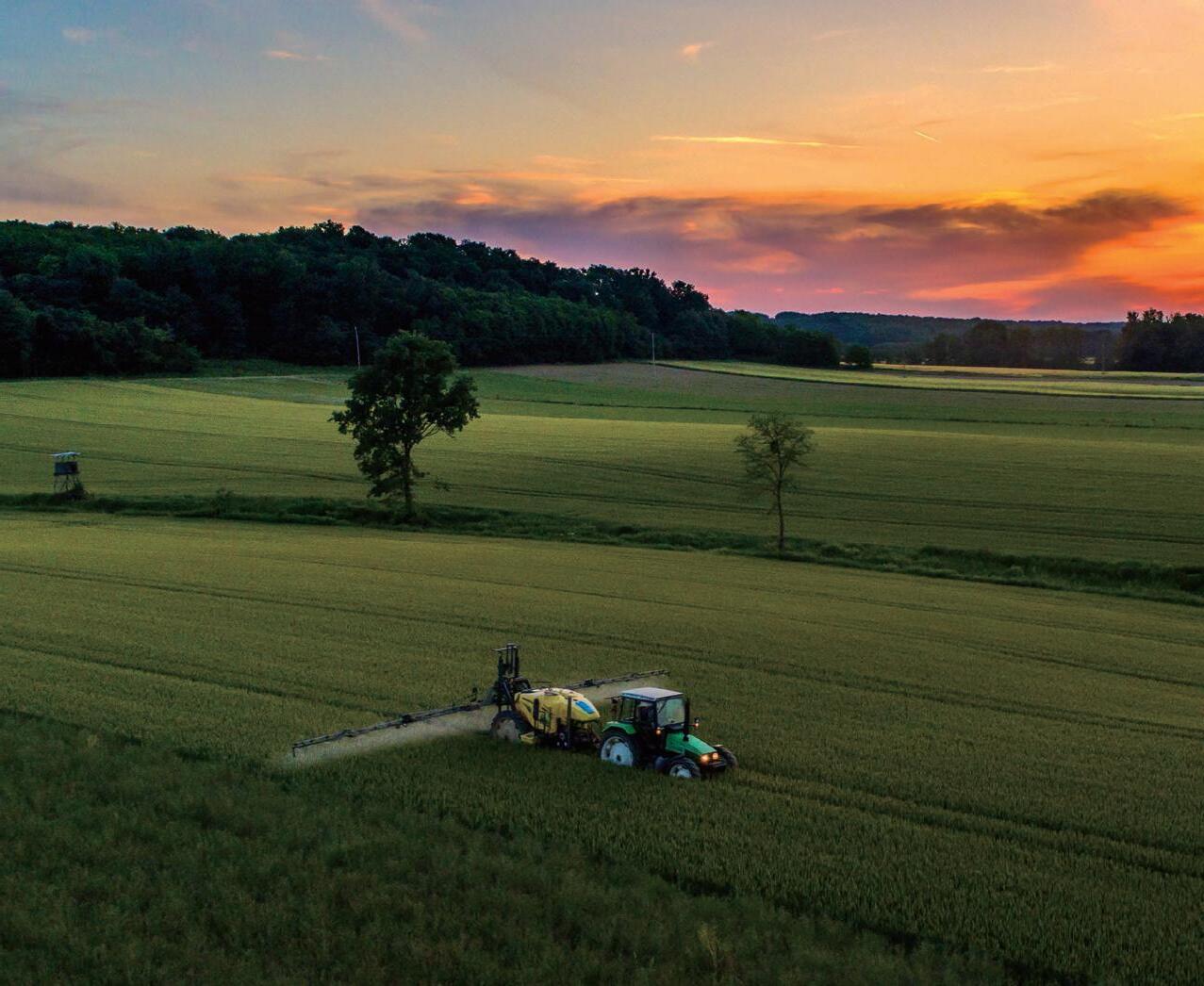

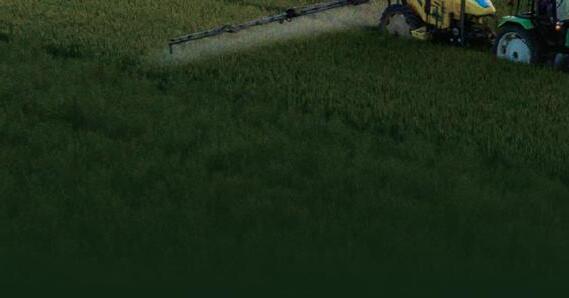

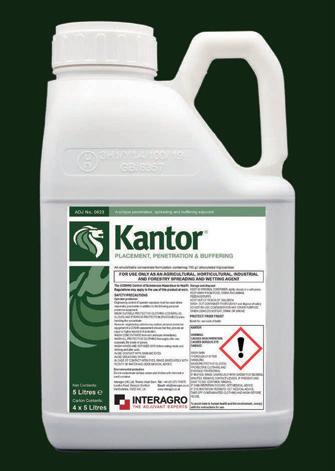



Two world record crop yields and the Innovator of the Year Award were celebrated at this year's Yield Enhancement Network (YEN) conference, held at Peterborough.
The network's 10th anniversary event was attended by almost 200 delegates – including dozens of farmers who have seen yields and productivity increase since the YEN was established a decade ago to develop a new way of working.
Bringing together farmers, advisers, scientists and commercial organisations to learn by sharing, the YEN approach includes knowledge exchange, detailed crop post-mortems and benchmarking, explained network director and co-founder Roger Sylvester-Bradley.
It’s tenth harvest saw world record crops of winter wheat (18t/ha) and barley (16.2t/ha) grown on Tim Lamyman’s farm at Worlaby, Lincolnshire. The approach has proved so attractive that YENs have now been initiated in Canada and the USA.

The YEN Innovator of the Year Award was presented to Russ McKenzie of DJ Tebbit, Huntingdon, Cambridgeshire, for his commitment, innovative ideas, and use of trials and analysis for yield enhancement.
For the past 10 years, YEN has studied yields of wheat, barley, oats, oilseed rape, peas beans and recently linseed. It has also recently ventured to enhance nutritional efficiency (YEN Nutrition) and reduce carbon intensities of cropping (YEN Zero).
The UK-based YEN has now accumulated over 5,000 crop yields with over a million explanatory data items. This puts the YEN in a unique position to analyse the complexities of meeting the urgent twin challenges of raising farm productivity in the UK, and ensuring its sustainability.


The YEN has been supported and funded almost entirely by the industry itself through efforts of farmers and their advisors, sponsorship from their support industry and levies – enabling scientists to organise the reports, col-
scientists in explaining how growers could still produce such high yields.
For the first time, this year many farms managed to exceed their maximum theoretical potential yields – despite a difficult season by ongoing lack of rain and record-breaking high temperatures during the summer.
Prof Sylvester-Bradley said: “Either the farms are not understanding how good their soils are, or our science is too pessimistic about how good our potential yields are”. Either way, 2022 had been a good year for sharing lessons about crop yield prospects in the UK, he added.
Speaking at the conference, ADAS crop physiologist Pete Berry said one of the main lessons was the “farm factor” – the extent to which farms differ. High-performing farms monitored their performance and paid attention to detail – characteristics other farms could also adopt.
The YEN encourages farmers to share data to benchmark their crop performance against peers, enabling insights to be gained and shared by
the community. In turn, this enables growers and scientists to work together to improve yields.
ADAS crop physiologist Sarah Kendall said: “Attention now turns to how YEN develops into the future. We want to ensure it remains relevant and allows members to use the approach at the whole farm as well as field level.
“Identifying the funding mechanisms to achieve this will be vital.”
Best wheat, rye or triticale yield
Gold: Tim Lamyman (Lincolnshire), supported by Frontier (World Record TBC) 18.0 t/ha
Silver: Mark Stubbs (Lincolnshire), sponsored by Hutchinsons 16.7 t/ha
Bronze: Vagn Lundsteen (Zealand, Denmark), independent entry 16.1 t/ha
Best % of potential wheat, rye or triticale yield
Gold: Ashley Jones (Cornwall), sponsored by Limagrain 132% of 11.7 t/ha
Silver: Mark Stubbs (Lincolnshire), sponsored by Hutchinsons 116% of 14.4 t/ha
Bronze: James Loder-Symonds (Kent), sponsored by Bayer 106% of 12.2 t/ha
Milling wheat protein yield & baking quality awards, sponsored by UK Flour Millers
Gold: Chris Eglington (Norfolk), sponsored by AHDB
Silver: Paul Cornwell (Suffolk), independent entry
Bronze: Richard Budd (Kent), sponsored by BASF
High performers pay attention to detailNew world record: Tim Lamyman's 17.96t/ha crop of winter wheat
Crops treated with a special urea are using nitrogen more efficiently, according to trials by farm management company Velcourt and fertiliser supplier Cofco International.
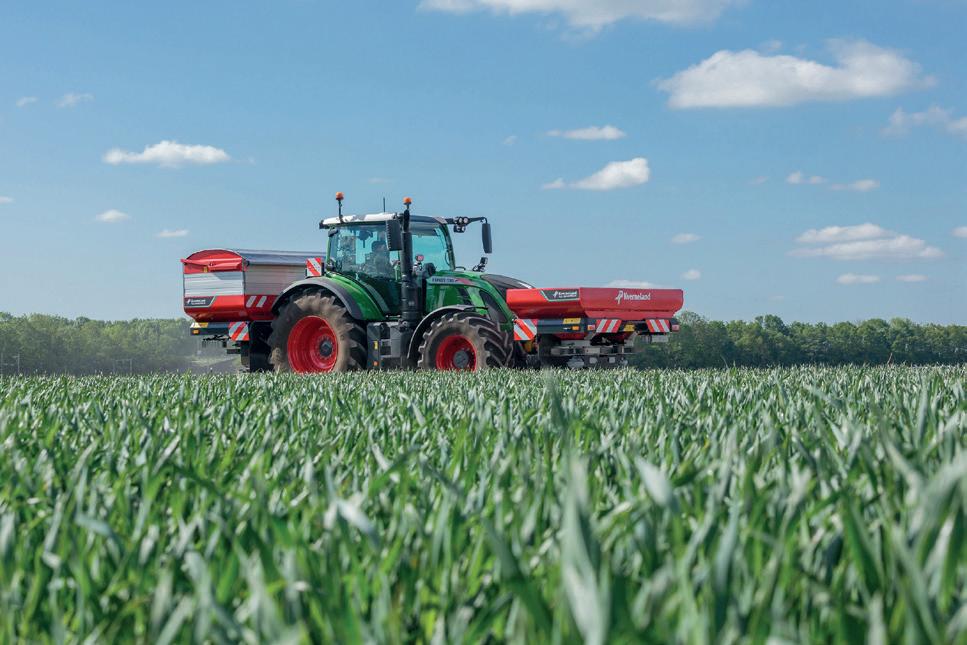
BASF’s Limus-protected urea includes a urease inhibitor that improves nitrogen use efficiency by reducing nitrogen losses from volatilisation – help ing to ensure more nitrogen is readily available to the crop.
The trials suggest that applications of Limus-protected urea significantly improve nitrogen recovery and over all nitrogen use efficiency compared to applications of ordinary ammoni um nitrate (AN).
As well as a substantial cost ben efit over AN, the results show Limusprotected urea is by far the most ef fective means of getting vital nitrogen into crops this spring, says Cofco Inter national UK fertiliser manager Rus sell Davison.

“It’s a very challenging time for UK growers at the moment, not just be cause of the rise in fertiliser prices gen erally but also because of the shortage of AN and AN-based products in the market, be they imported or produced domestically.
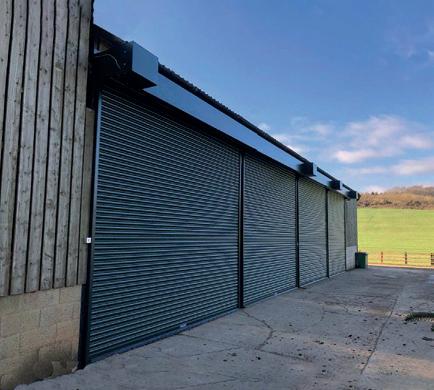
Mid-February prices were sitting at around £560/t for AN and £540/t for straight urea. But the price differ ential is even greater because AN con tains 33.5-34.5% nitrogen and urea is 46% nitrogen.
“The challenge with urea is man
aging potential loss of nitrogen to the atmosphere particularly when applications are in unfavourable conditions.
“This is highlighted by the Clean Air Strategy which will limit the times at which uninhibited urea can be used to between Jan 15th and March with these measures set out to reduce the negative effects of ammonia pollution on the environment and human health.
nitrogen is available to crops. But not all such products are the same.
“BASF Limus is an innovative ‘dual-active’ product in that it contains two specific urease inhibitors – enabling it to reduce ammonia emissions more effectively than products containing a single inhibitor.”
Emissions can be reduced by up to 98% over straight urea, adds Mr Davison.
“The treatment adds around £40£50/t to the cost of the urea but the
Continued on page 12
More nitrogen is available to the crop
For over 100 years our team of experts, have worked side-by-side with farmers to build sheds that help farms perform better. Eternit fibre cement sheets help increase ventilation, reduce noise and condensation, keeping sheds cool in summer and warm in the winter. Creating better environments for healthier livestock.

Connect with the agricultural building experts. Download the new MyEternit app today!
eternit.co.uk

Continued from page 10
higher N% of urea, the AN would have to be priced at £450/t, over £100 less than where it currently sits, to make it an economically attractive alterna tive to the treated urea.”


Nick Anderson, head of crop tech nology at Velcourt, says the big ques tion is whether Limus is as effective as AN at getting nitrogen into crops –and that is where the trials are shed ding some interesting light.



“It’s fair to say the standard ap proach to describing inhibited ureas in the past has been that they proba bly allow urea to perform as well as AN in the field, but our results from 2022 showed Limus-treated urea perform ing slightly better than AN.

“Aggregated results from two sites –one with heavy moisture retentive soil and the other on lighter droughty land near Stamford, in Lincolnshire – show Limus-treated urea delivers an aver age 3.4% increase in nitrogen recov ery compared to AN in winter wheat.



“These take into account both im provements in yield and protein con tent of the grain. Statistical analy sis allows us to say with more than 99% confidence that the crops recov



AN and in some cases it will be better. There were clear advantages on both light and heavy soils.”



The nitrogen recovery seen in the Velcourt trials is similar to that seen in BASF’s own worldwide trials programme, which further validates the findings, adds Mr Anderson.

“I think there’s growing confidence that the sort of advantages we are seeing for Limus are credible and consistent and there’s a real opportunity for growers to take advantage of this.

“In terms of break-even ratios, I would say you are looking at 7:1 for most people with AN now and around 5:1 for Limus-treated urea, which is a really significant difference and represents a sizeable cost benefit for Limus over AN.


“Plus, of course, it is widely reported that the carbon footprint of urea as an N source is much lower than that of AN, particularly imported AN. So however you look at it, there are now very strong arguments for switching out of AN to this type of treated urea.” All prices in this article are correct at the time of writing)

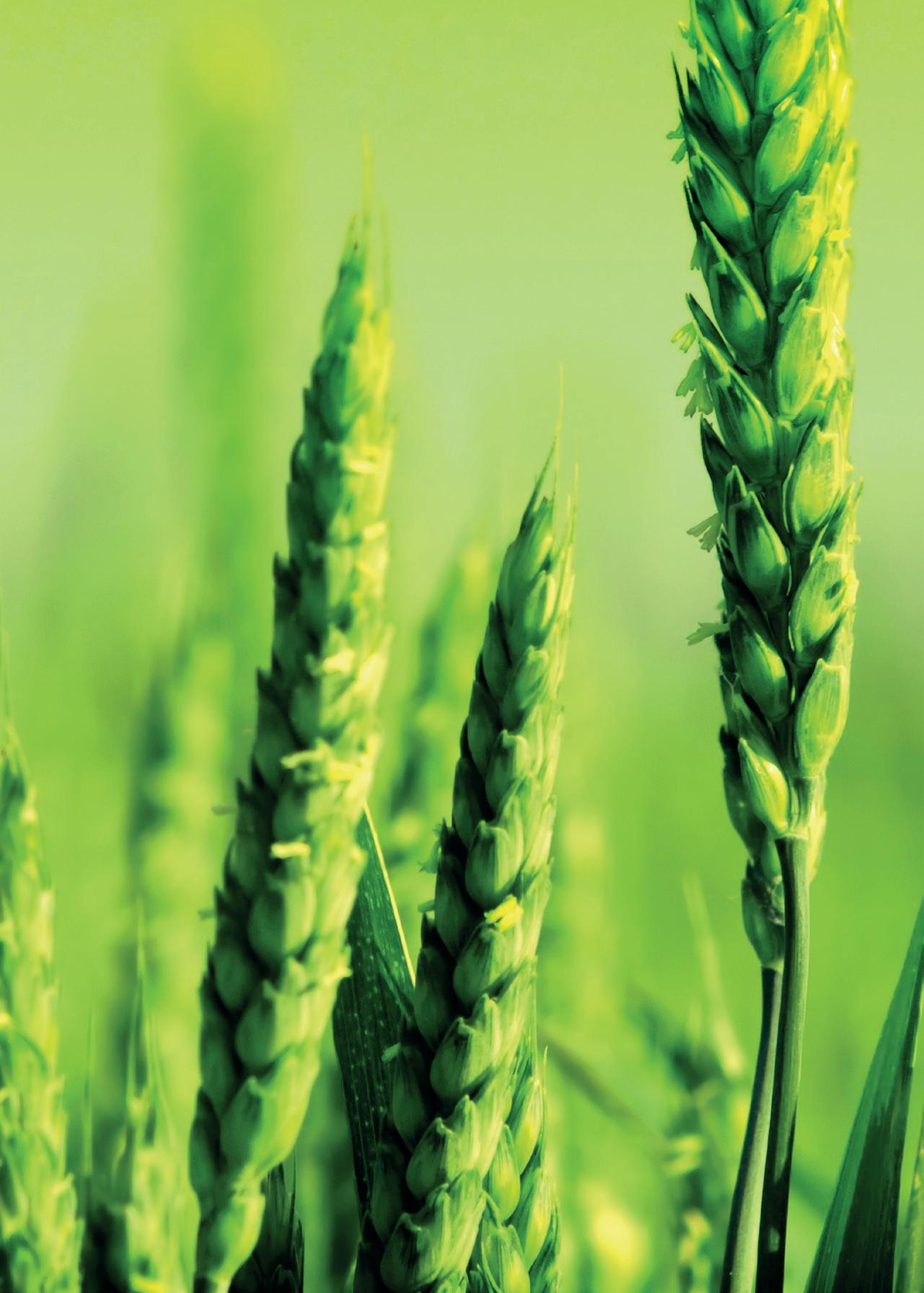
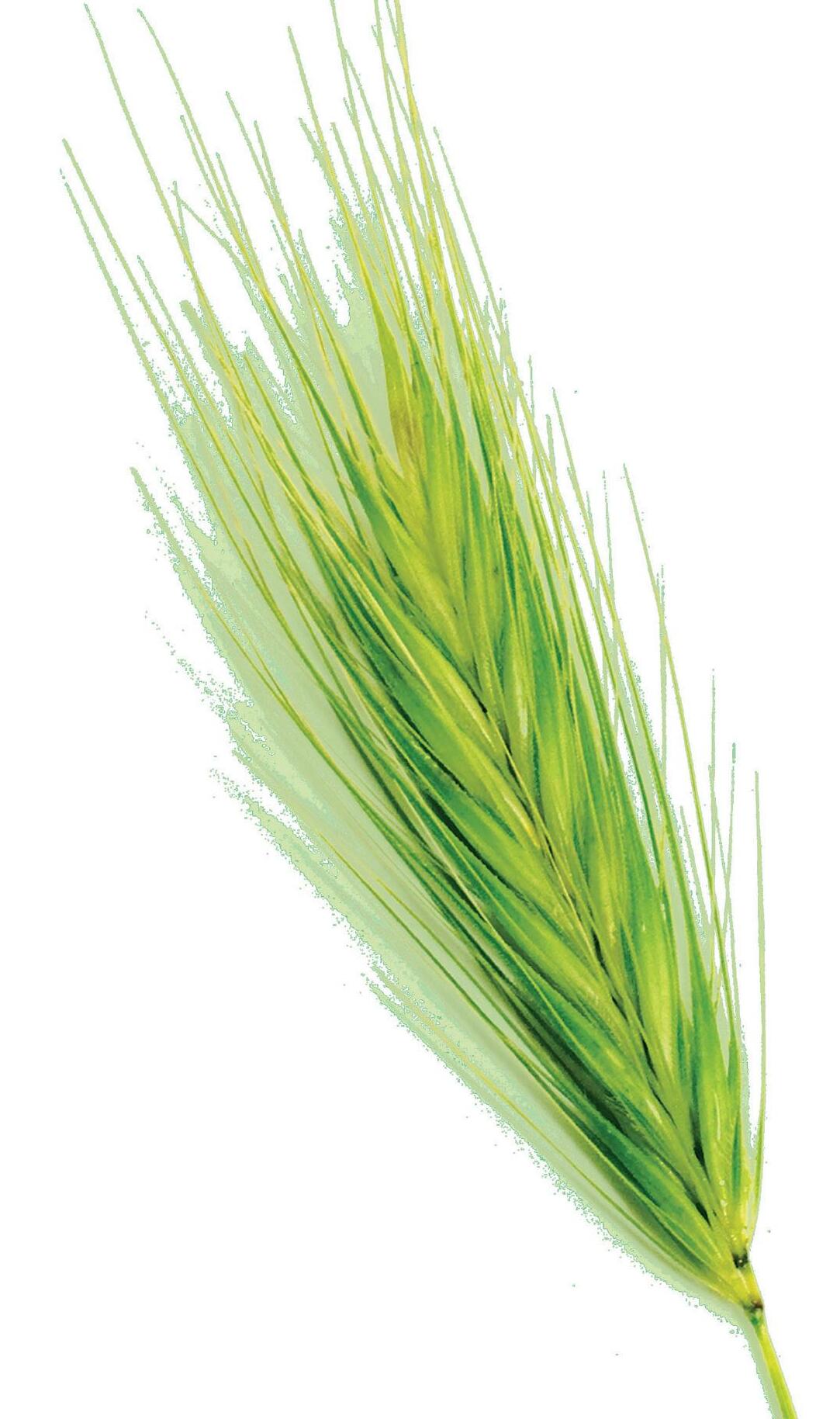




Wheat growers are being urged to assess disease risk and protect crops to avoid compromising yield potential or stoking problems later in the season.
The first T0 fungicide is often where some may look to make savings. But this could be false economy if yellow rust pressure is high, suggests a trial last season by Hutchinsons and BASF at Terrington, Norfolk.
It found that under significant yellow rust pressure, a 1.5 t/ha yield benefit could be attributed to a T0 applied to KWS Kinetic (rated 4 for yellow rust). The trial compared a full programme (T1-T3) with and without a metconazole-based T0.
“Considering the historical average yield response from T0s is nearer 0.1 t/ ha, the Terrington result is unexpected,” says David Howard, head of integrated crop management.
“But it highlights the variability long-term averages can mask, and how challenging rust management can be once it builds in crops
Last season was particularly high risk for yellow rust, acknowledges Mr Howard. This was due to a mild winter and monthly temperatures from January onwards being around 2°C above average.
Weather tracking data shows most areas experienced 70-80 days between January and July where temperatures were optimal for yellow rust (10-15°C).
“Under such conditions, disease cycles faster, multiplies and reinfects crops more rapidly, keeping pressure high, resulting in clear benefits from reducing inoculum early.”
This was highlighted clearly at Terrington, with leaf inspections showing less disease infection on all the main leaves, culminating in 8-10% less yellow rust on the flag leaf where a T0 was applied.
Growers should avoid complacency,
No complacency
Conditions so far this season have been somewhat different to 2021/22, with cold weather during December and some of January helping to reduce the yellow rust risk by killing pustules, and infected lower leaves of the crop.
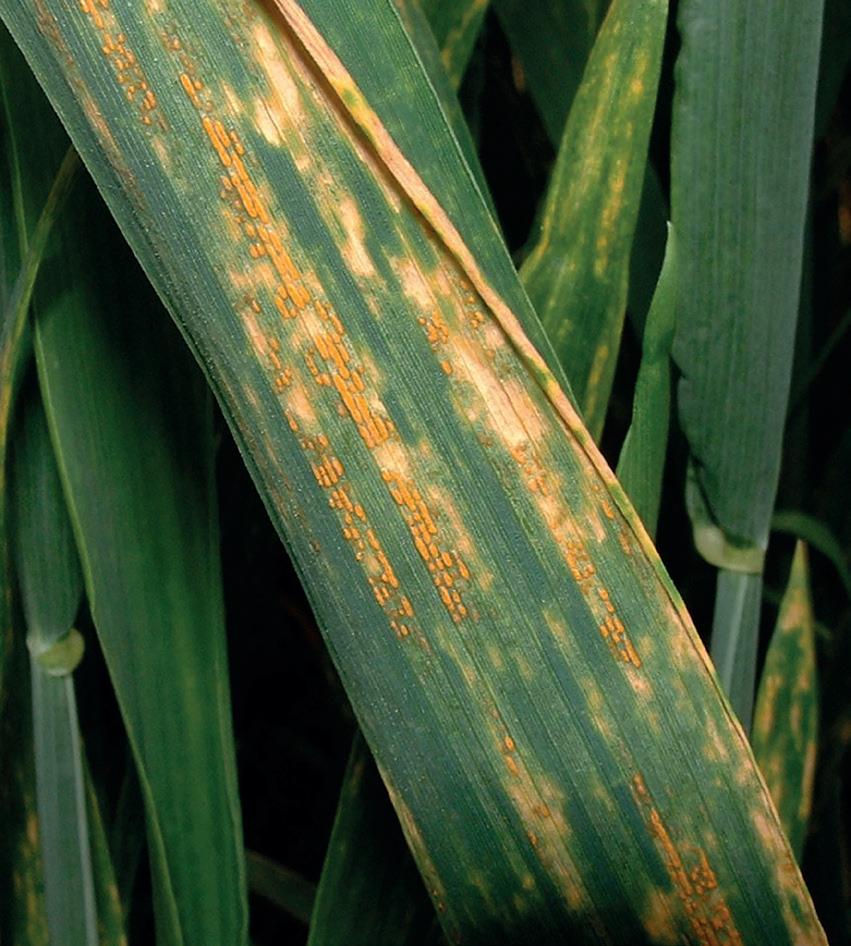
Research also shows frosts below -5°C will affect dormant mycelium. A large area of relatively early-sown wheat last autumn may further help to counter yellow rust risk.
But, growers should not drop their guard, Mr Howard warns.
“Changing pathogens and increasingly unpredictable weather strengthen the case for T0 sprays to become standard for early disease - notably rust - man-
Lincolnshire-based Farmacy agronomist Charles Wright agrees.
“Rust pressure has been generally lower than last year, but don’t get complacent. Relative yellow rust risk is getting greater in the UK because of the weather patterns we’re having, so saying it’s lower risk now is somewhat dif-
Continued on page 16
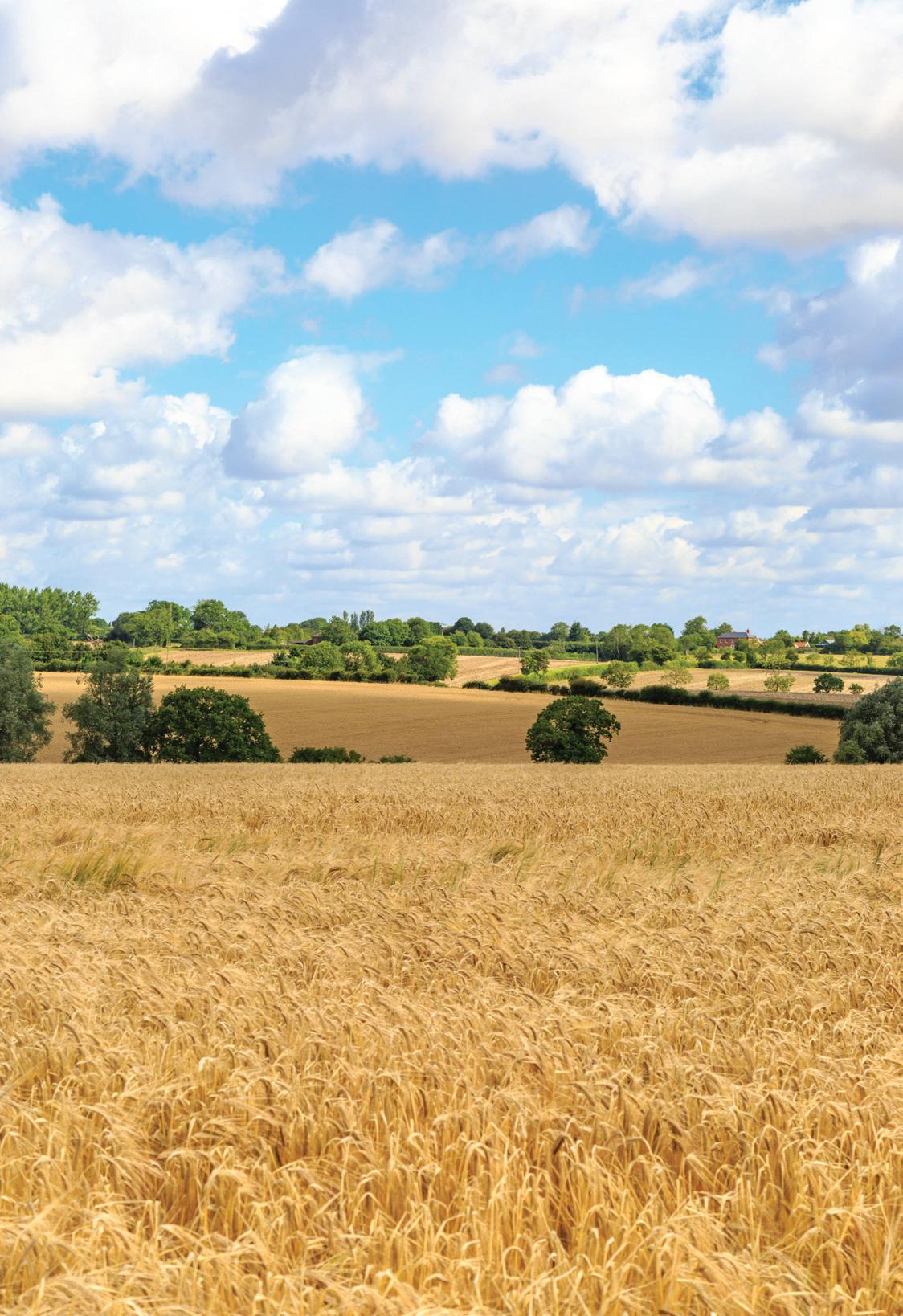

Continued from page 14 ferent to saying that 10 years ago.”
Many popular varieties are susceptible to yellow rust, including Skyfall (rated 3), KWS Zyatt (3), and Gleam (5), but even those with higher AHDB Recommended List scores, such as KWS Extase (8) and KWS Dawsum (9), should be managed carefully, as previous seasons have shown the potential of new races to overcome genetic resistance.
Later-sown crops, such as those after roots or veg, or where drilling was delayed due to black-grass management, may be at greater risk of yellow rust, he adds.
“We need to be proactive about managing the disease.”
T0 timing
Traditionally, many growers target growth stage 30 for applying the T0, however Mr Howard says there is greater flexibility by going for a slightly wider application window of GS 25-30 where pressure is high.
This reduces the chances of weather delays rolling T0 sprays into the T1, and gives the much-needed treatment gap

to lower inoculum pressure and allow T1s to be less curative and more protectant (where chemistry is most effective).
Metconazole or tebuconazole-based products are preferred where rust needs rapidly knocking out, while strobilurins, such as azoxystrobin or pyraclostrobin, offer longer-lasting protection, but less curative activity, he advises.
In the most susceptible varieties, where risk is very high or yellow rust has become established over winter, there may be a need to apply a fungicide before the main T0 (from post-tillering, GS 20+), although Mr Wright says growers should check with their agronomist as only a limited range of products can be used at this early timing.
He favours straight tebuconazole pre-T0, allowing the true T0 to be applied at GS 30, and helping to maintain a tight 2.5-3 week interval between the T0 and T1 treatments.
“The keys to rust management are to not let it get established, and keep the intervals between active fungicides tight.”
While yellow rust is the focus of most
T0 programmes, early-sown wheats with high biomass will inherently be at greater risk of Septoria, so this should not be overlooked at T0, especially in more susceptible varieties or regions.
“Some growers may have turned away from using T0s to manage Septoria after chlorothalonil’s withdrawal, but there are benefits from keeping Septoria in check and buying flexibility towards T1,” says Mr Howard.
Metconazole has some Septoria activity, although folpet offers greater protection, he says. “Avoid primary azoles as they are likely to feature in later fungicide applications. Generally, it’s the rainfall during April and May that really drives Septoria pressure, but early drilled crops with bigger biomass, will be at greater risk.
“For growers trying to be proactive against Septoria at T0, then the multisite folpet is probably my preferred option, as you’re hopefully protecting some of the new growth from getting Septoria.
“With high input prices and still decent commodity prices, any element of risk management you can bring into the situation is worthwhile.”
Backward crops will need a good early dose of nitrogen this season – and forward crops may well need the same to avoid running out of steam very quickly.
Even where fields have high soil nitrogen supply levels, they will still require a good early application of nitrogen of at least 60-80kg/ha, says Hutchinsons fertiliser and crop nutrition specialist Rob Jewers.
“Trials at our Helix Farms and Regional Technology Centre’s over the past few years have shown us that crops need a good base foundation of soil applied nitrogen, granu-

lar or liquid, to grow biomass and retain tillers to maximise yield potential.”

“Crops should receive a good base application of nitrogen anywhere between 120180kg/ha depending on individual circumstances and final applications then tailored according to developments in the season, end market etc,” he adds.
Soil nitrogen supply in spring 2022 was higher than in 2021 due to low winter rainfall and mild conditions. This meant nitroegn mineralisation continued through last winter so many nitrogen applications could
be cut back without any noticeable impact on production.
But results of testing this year show generally lower supplies due to higher winter rainfall and cooler temperatures. “They are more in line with what we would expect to see in a typical year,” says Mr Jewer.
“The important underlying message is that with generally lower soil nitrogen supply than last year, there might not be as much opportunity to cut back on nitrogen rates,” he adds. “It’s important to know your baselines.”
“

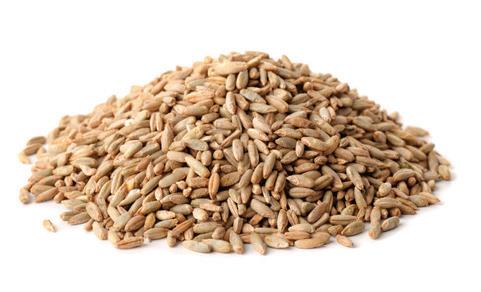
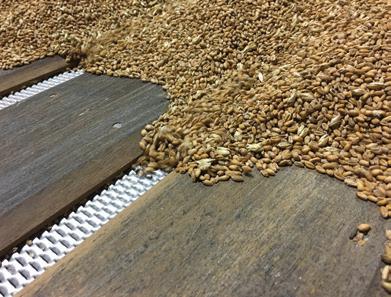
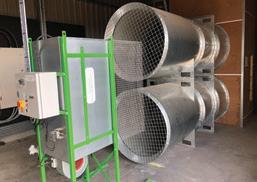
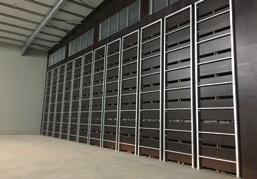

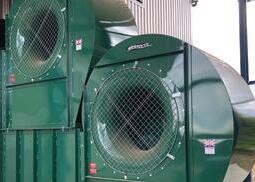
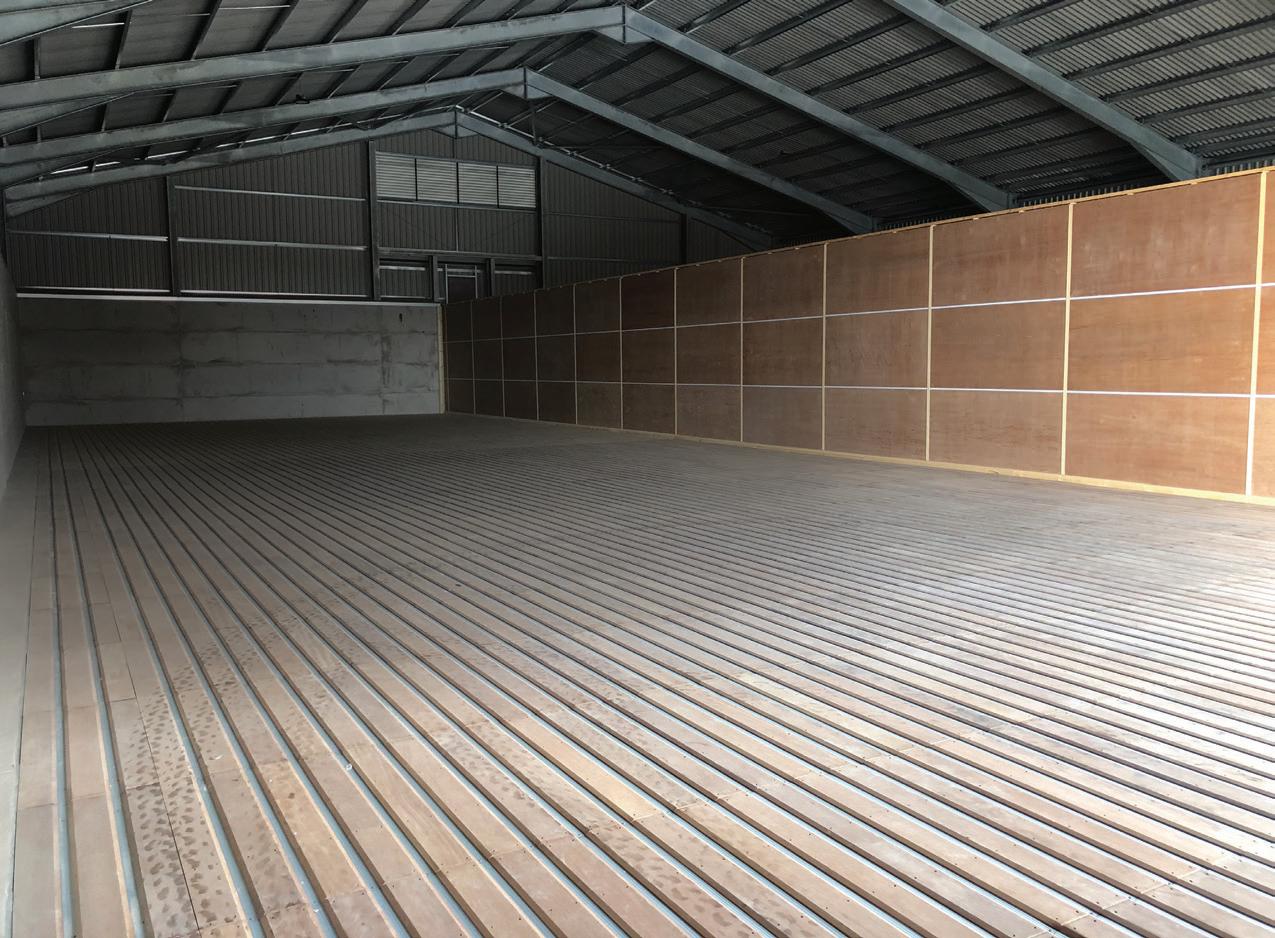
Flach
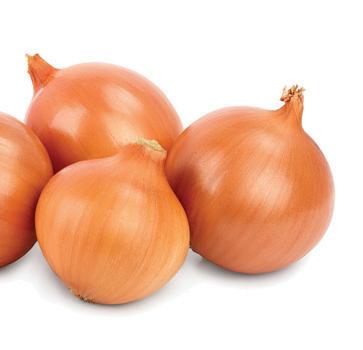
Telephone:
Email:
Website:



Drought-hit fenland soils in Cambridgeshire are leaking 112 times as much carbon as nearby fields not on peat soil, suggests a study.
Lack of rain has dried out vegetable-growing fenland soils which are releasing on average 1344t of CO2 per km2 per year, suggests a new analysis of government data by the Energy and Climate Intelligence Unit (ECIU).
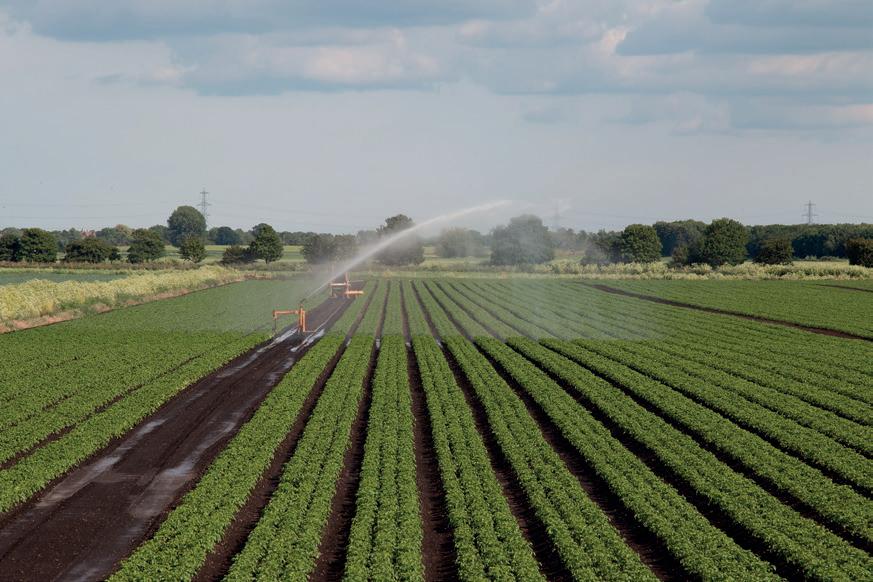
East Anglia remains in drought following lack of rain last year, according to the Environment Agency. The Fens are one of the UK's driest regions, receiving a similar rainfall amount of rainfall to parts of the Middle East.
Dry peat soils release their carbon to the atmosphere and are exposed to wind and rain, blowing and washing them away. This degradation means they are not as good at storing scarce water when it falls on them, says the ECIU.
Some parts of the Fens may start
liams said said: “The bedrock of our food security is our soil. Supporting farmers to preserve their soils, plant trees and hedgerows to reduce erosion from wind and extreme rainfall will ultimately protect our yields."
He added: "Rewarding farmers for ploughing less often or for growing crops that absorb nutrients from the atmosphere and return them to the soil are simple steps in the right direction.
"To ensure UK food security in the face of climate change we may need to look at other parts of the country to grow vegetables. These are complex issues and more research is needed to understand the dynamics and the solutions.”
The government’s 25 Year Environment Plan for England set a target for all peat soils to be sustainably managed by 2030. As announced in 2018, the Government’s ELM scheme would incentivise farmers to take measures to improve soil health.
The plan states that all soils must be sustainably managed by 2030. And the government’s peat action plan for England established a Lowland Agricultural Peat Task Force to examine the challenges facing these soils.
Owners of English peatland will soon be able to apply to the third round of Defra's peatland restoration programme.
Grants of up to £2 million will fund up to 75% of the cost of capital projects with potential to restore hydrological function and peat-forming vegetation on peat soils at least 30cm deep and with at least 50% soil organic matter content.
The competitive scheme is likely to be open for applications this April with an eight-week window, says Andrew Shirley of rural business consultants Knight Frank. It is being administered by Natural England.
Damaged or mismanaged peatland is a significant source of greenhouse gas emissions. The Nature for Climate Peatland Grant Scheme aims to restore 35,000ha of degraded peat in England by March 2025.
Natural England is expected to look for landscape-scale applications that work to restore the whole hydrological unit of a peatland – so each application is likely to involve a number of sites and landowners. Landowners can normally apply for up to 75% of total project costs. In exceptional cases, however, applications can be approved for up to 85% of the cost – but they must meet strict criteria.
Exceptional cases are defined as those which offer unique and significant environmental benefits that commonly-used restoration techniques could not achieve – for example, innovative techniques to reintroduce rare species.
They must also be applications from organisations or partnerships with constraints over their ability to secure other funding.
All Restoration Grant applicants must match at least 15% of the project funding from a non-government source. For further details and to attend a webinar about the scheme, email peatlandscheme@ naturalengland.org.uk.
Soil is the bedrock of our food security
“








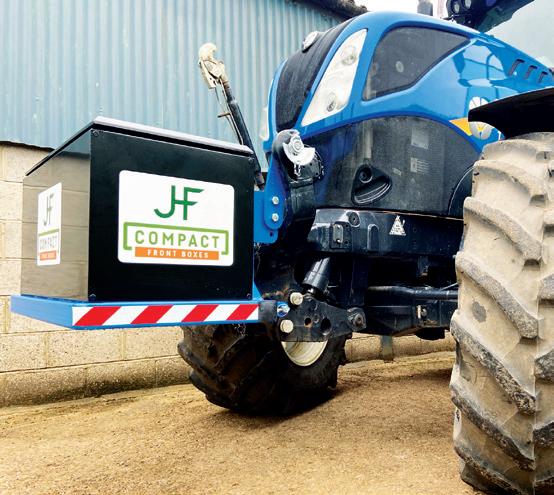




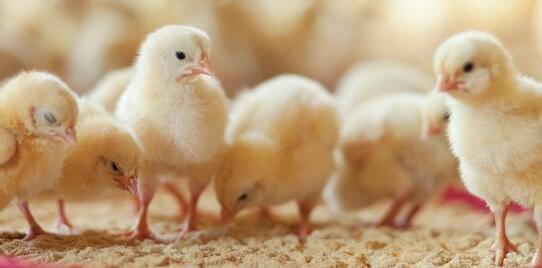

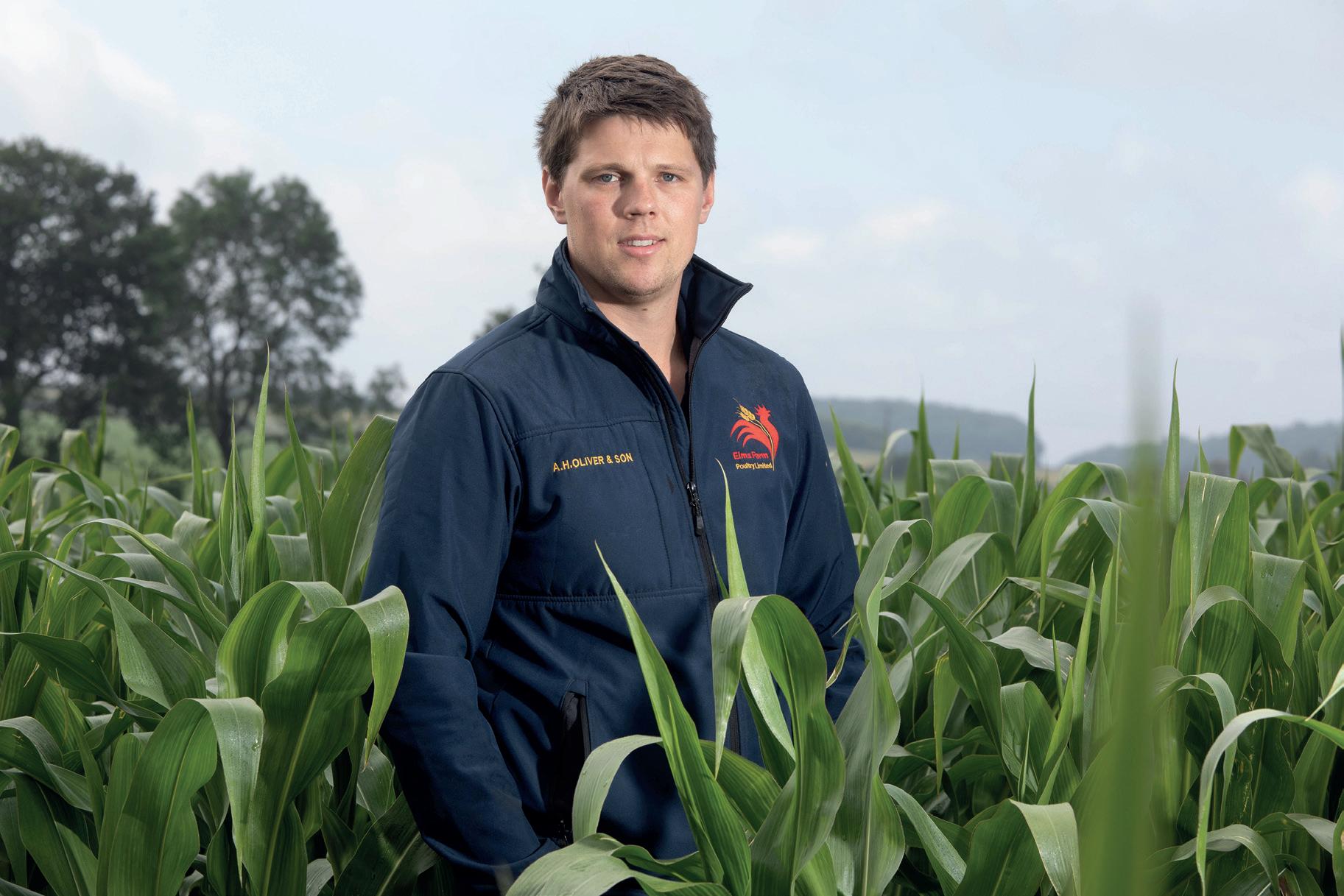
ALeicestershire farmer has boosted soil organic matter levels by using chicken muck and digestate instead of bagged fertiliser on his fields.
Will Oliver, of AH Oliver & Sons, farms 850ha in a 20-mile radius on clay loam soils about seven miles south-
west of Coalville. The farm was run by his father and grandfather before him when Mr Oliver returned home after graduating from Harper Adams.
“I was never going to be the sort of son who comes home and carry on doing the same thing everyone has been doing – I wanted to add value,”
he says. “So I decided to do my BASIS and FACTS qualifications and took on the farm agronomy.”
Cropping includes winter wheat, grain maize, winter beans and countryside stewardship.
The farm also has its own glamping business. The Dandelion Hideaway includes six secluded canvas cottages filled with nostalgic touches in a country house design.
When Will came home, he soon realised that the soils were lacking in organic content. “At the time, we were getting all our nutrition out of a bag. We were getting good yields but it was becoming expensive. We were very high input, high output.
Cultivations
“We weren’t ploughing, but we were very intensive in our cultivations. We were subsoiling and Top Downing everything. No expense was spared and we were operating a block rotation. It was very rigid, there was no flexibility and I decided we had to knock it on the head.”
Soil organic matter was as low as 2.6% in some fields. To boost it, Will did a few straw-for-muck deals. But he felt there must be a better way. “I just didn’t like them – I always felt we were on the wrong side of the deal so we decided to do something more radical.”
After looking at all the options, the family applied for planning permission to build a 200,000-bird broiler. The £3.6m investment was up and running by the end of 2019, generating almost 2000 tonnes of poultry muck annually.
Applications of poultry muck to fields are supplemented with carefully applied digestate from a local Biogen
passionate about getting the best out of them,” he explains. Success saw Mr Oliver win the Farmers Weekly Arable Farmer of the Year Award for 2022.

“When we purchased this particular farm in 2011, the indices were higher in the field where they spread muck historically. Now we are measuring indices accurately in other fields and making sure we put muck right where it is needed to get the best out of it.”
Mr Oliver says he would usually buy 330 tonnes of Nitram annually. Last year, about half was left over. “By utilising manures, we’ve still got 160 tonnes of Nitram in the shed which we bought for £272/t. We’ve since bought some more for £670/t, but the average price is still good.”
The bagged fertiliser serves as an insurance policy, adds Mr Oliver. “We’re alright at the minute, but if the weather changes and we can’t get on with organic manures for whatever reason, I can still put Nitram on growing crops of wheat because its easier to get on the field.
Although a hefty investment, the poultry enterprise is run as a separate business to the arable land. It has its own farm manager and looks after it-
out of the manures if I changed it –so we ended up going down the maize route.”
Switching the rotation happened almost by accident when wet weather made it difficult to get a regular spring crop in the ground. Instead, Mr Oliver decided to grow 20ha (50 acres) of maize and see how it went.
“A local contractor was doing grain maize. They drilled it and combined it. We dried it and it did 9t/ha. We have a ready market on our doorstep with GLW Feeds and the next year we did 200ha (500 acres). It was much better than rape, where we are losing money to flea beetle.”
Mr Oliver has grown maize ever since. “We had overdone rape really, so we decided to give it a holiday and continue growing maize. We said last year we would put a bit of rape in if conditions were perfect but it was too dry, so we didn’t bother.”
“So the rape holiday just keeps going on and on. And to be honest, I don’t miss it. If you only do 40ha, you end up with a bit of rape in the corner of the shed and it becomes a hassle having it. It ends up taking over the whole shed, so we’ve stuck with the maize.”
Mr Oliver is still in the process of testing organc matter levels across the whole farm. But when he started applying the manures, the soil in the field where he started was just 2.6% organic matter. Two years later it had
“
Will Oliver was named Arable Farmer of the Year by Farmers Weekly
plied poultry muck and we have also used cover cropping. We’ve gone from a quite heavily intensive cultivation system with a wheat-rape rotation to something which is much more sustainable and helps boost organic matter.


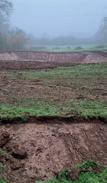



“The grain maize works too because we are only taking the cob away, rather than the whole plant too – so we’ve got huge amounts of organic matter going back into the soil and effectively acting like a green compost. It makes it harder to establish wheat afterwards
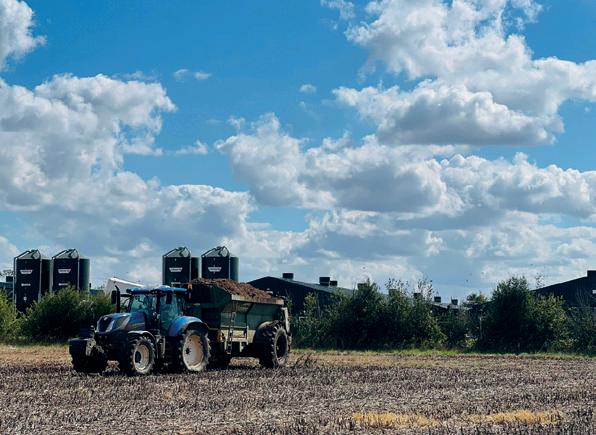


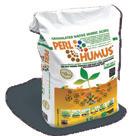


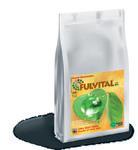
Although maize is a break crop, it still has a high value, adds Mr Oliver.
“We can get a good margin with maize, especially compared to beans, which are not hugely profitable in their own right. But they bring other benefits to the rotation – and I tend to look at the rotation as a whole, rather than looking at each crop in isolation.
“We are completely flexible in what we do now, whereas before we everything we did was based on a rigid block rotation. Now we could put a crop like spring beans in and I would be happy.
We would do a double break if we had to – I wouldn’t mind at all.”
This flexibility – and the lack of rape – means there are no slug issues either. It’s also better for drainage, says Mr Oliver. “At the minute I’m enjoying it. We’re not chasing pigeons off rape any more – although having maize means I am chasing more crows.”
Twitter: @willoliver88
www.dandyglamping.co.uk



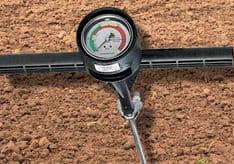
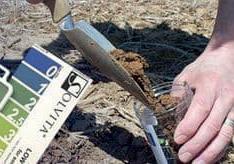
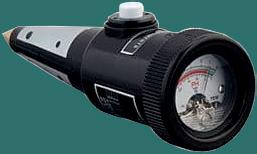











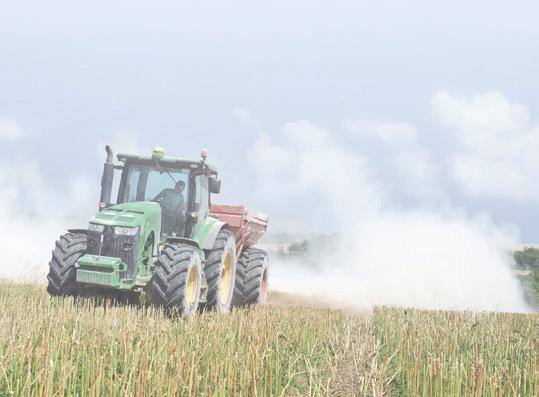








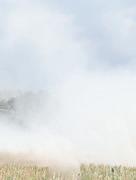









































































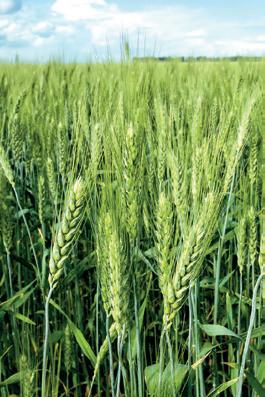









Anew test can identify, measure and compare soil organic carbon content – helping farmers improve and maintain soil health and carbon sequestration.
Launched by Eurofins Agro UK, the test uses use near-infrared spectroscopy to measure organic matter. This will help farmers to make more accurate decisions and reduce CO2 emissions by sequestering more carbon, says the company's Sophie Cath.

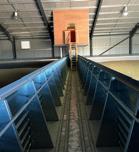
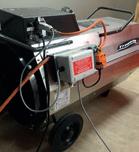
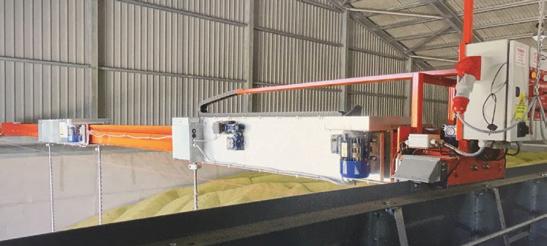
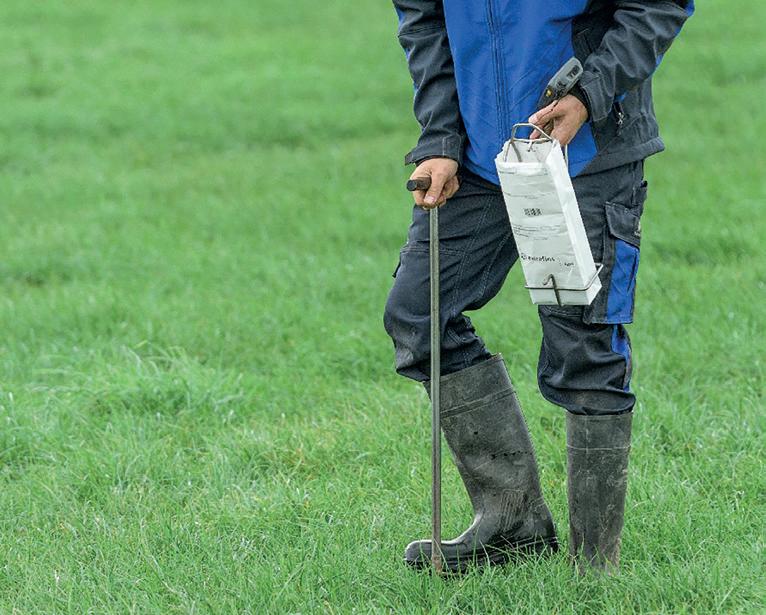

“For the first time, farmers will be able to use accurate carbon data to chart soil health. This will help decide crop rotation, the use of nitrogen fixing cover or break crops and the quantity of organic and non-organic fertilisers.”
The test will provide data on how much carbon is sequestered in the soil, how much organic matter is stable or dynamic, what inputs can be used to improve the carbon sequestration potential of the soil, and how those inputs are likely to impact on the crop.”
Carbon is seen as a key indicator of soil stability and fertility. Understanding how it fluctuates is the key to bal-
ancing the amount of carbon, nitrogen, and other soil components.


“Understanding the carbon to nitrogen ratio is critical to soil stability because it helps to indicate what levels of nitrogen and other inputs are sustainable for the soil,” says Ms Cath. The speed at which organic matter degrades determines the nutrients released to a crop. The higher the breakdown, the more nutrients are made available. The test captures this data which is then made available to farmers.
Results indicate what inputs will benefit the crop and what needs to be returned to the soil to improve carbon sequestration, says Ms Cath. The optimum level for a given crop can be better gauged by first understanding the active organic carbon content, she adds.
“We know that adding nitrogen stimulates growth. But the carbon to nitrogen ration is crucial to accurately evaluating the stability of organic matter and the speed it is broken down. By understanding this, we can manage soil carbon sequestration more accurately.”
Farmers joining Defra's Sustainable Farming Incentive (SFI) scheme are being advised to ensure they avoid unnecessary costs during the application process.
The SFI pays farmers for meeting defined farm management standards. It is the entry level scheme for the government's flagship Environmental Land Management initiative, which is being rolled out in place of the Basic Payment Scheme.
The SFI arable and grassland soil standards for example, require the completion of soil assessments, a soil management plan and – at the intermediate levels – the inclusion of multi-species cover crops or herbal leys.
In some situations, this could see two separate farm advisers involved in a successful application: a land agent who handles the paperwork and am agronomist who advises on the cropping or herbal ley establishment.
There is a risk farmers could pay once for this application process – and then face further charges from an adviser with the tech-
The Sustainable Farming Incentive pays farmers to carry out farming activities in a more environmentally sustainable way so food can be produced alongside the provision of environmental goods and services.
Defra launched the SFI with three standards in June 2022:
• arable and horticulture soils standard
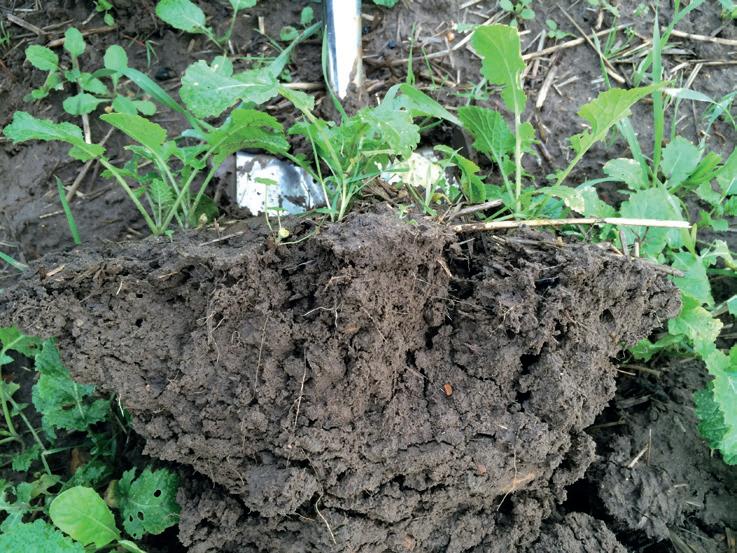
• improved grassland soils standard
• moorland standard
Six new standards are being introduced in 2023. They are:
• nutrient management standard
• integrated pest management standard
• hedgerows standard
• arable and horticultural land standard
• improved grassland standard
• low/no input grassland standard
nical expertise required to complete the necessary actions, says Hutchinsons agronomist Ed Porter.
Making these options work properly for individual farms invariably requires in-depth discussions about topics, he says. They include species selection, rotational impact, risks and benefits to following crops, and options for building soil organic matter.
“The issue with other agri-environmental schemes in the past has been the lack of interaction with the agronomist, but the SFI standards are very much agronomist-led,” explains Mr Porter.
“You need someone with the knowledge, expertise and qualifications to have the technical discussions about the options available, assist with the application process, and conduct the necessary actions required for each standard.”
Furthermore, Defra plans for Integrated
Defra says the offer is wide-ranging and will help the government achieve its goals for food production, the environment and climate. Farmers who already have an SFI agreement will be able to add these actions and more land.
SFI agreements last for 3 years. The government says many of the actions will help growers and livestock producers reduce their costs, improve their efficiency and improve the natural environment.
The nutrient and integrated pest management standards, for example, can help to optimise input usage, reducing costs while potentially maintaining or improving yields.
The Sustainable Farming Incentive pays farmers for healthy soils
Pest Management (IPM) and nutrient management standards – due to be launched this summer – will see farmers required to take BASIS-qualified advice, and get a nutrient management assessment.
“An agronomist has the technical expertise to talk through all of the options available, the actions needed, and how they will all fit together in a whole-farm situation. It’s more technical than just ticking a few boxes - it’s a whole-farm approach at field level.”
Available from Hutchinsons, the Omnia digital farming platform is an ideal tool for recording and completing all information necessary to meet SFI soils standard requirements in a functional and easy way, says Mr Porter.
Users can also easily generate a report summarising the information required for compliance. Omnia can also assist with nutrient plans – and will continually updated to ensure it remains relevant as SFI scheme requirements change.
“If farmers get onto this now, they will be well set up for when the next standards are launched in coming months,” Mr Porter adds.
“I truly believe that the SFI is the right way forward; it’s hugely beneficial to the environment and to the farmer, and may also allow some farmers to get the much-needed recognition for things they’ve been doing on farm for many years.
“It’s so important all farmers engage with the SFI process this year, as there will be a big drop in basic payments coming into effect during 2023.
The SFI will go some way to helping plug that gap – either directly, or indirectly through productivity improvements from taking up some of these options. Farmers have to engage with their agronomist to make sure everything is done properly.”
• New scheme is worth considering
• Applications could need expertise
• Further standards being rolled out
Fertilisation accounts for about a third of the operating costs in arable farming.
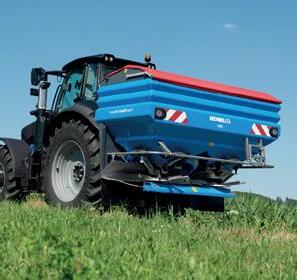


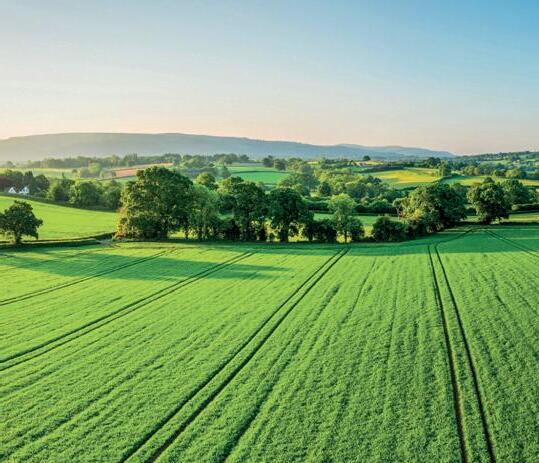
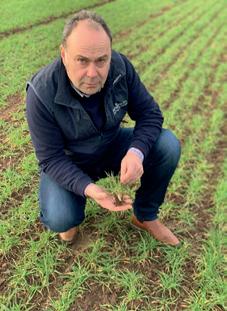





That’s why the technology used is all the more important to minimise losses and increase both efficacy and precision. Our fertiliser spreaders meet the most stringent demands: they spread highly precisely, save fertiliser in the process and are easy to set up – and above all they support your success! Experience Spica, Tauri and Polaris – fertilising precision in LEMKEN Blue.
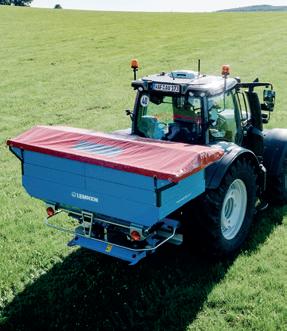



NH Delta is a technology that improves Nitrogen use efficiency (NUE) stabilising nitrogen in the optimal amine form NH2, altering plant growth habit through the moderation of auxins and promotion of cytokinins from root development to maximise the yield to plant biomass ratio maintaining healthy plant structure helping the reduction of environmental losses of bagged N.
Available in combination with essential elements Ca (+B) or K (+Mn). Delta provides nitrogen in an amine form ready for immediate plant assimilation and use, it requires only half the plant energy for root uptake compared to nitrates.

W. B Daw & Son are a family-run, mixed farming business based in the West Midlands. We are looking for arable land for combinable crops and potatoes from annual to multi-year agreements. FBT’s or Contract/Share Farming Arrangements.
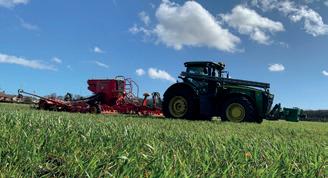
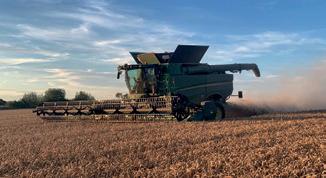
• A broad rotation incorporating cover crops and organic manures
• Wide range of cultivation and establishment methods

• Grain storage, cleaning and drying with renewable heat

• Modern, well-equipped machinery
• Environmental schemes established and maintained


Please contact Sam 07525 670703 or James 07885 467487 to discuss any opportunities. www.wbdawandson.co.uk


• More rain needed – and soon
Better management important
Another hot dry spell could see drought conditions return in this summer – despite winter rainfall replenishing most water levels, farmers have been warned.
The Environment Agency and National Drought Group said they were continuing to take action to reduce risks, improve water supplies and protect the environment following the driest summer for almost 30 years in 2022.
Water resources remain at risks, despite big improvements following five consecutive months of above average rainfall. East Anglia remains in official “drought” status, with most other areas now “recovering”.
“While most water levels have returned to normal across much of the country, low rainfall in recent weeks highlights the importance of remaining vigilant,” said drought group chairman and Environment Agency executive director John Leyland.
“We cannot rely on the weather alone, which is why the Environment Agency, water companies and our partners are taking action to ensure water resources are in the best possible position both for the summer and for future droughts.”
As of the beginning of February, total reservoir capacity across the country stood at 88%. This compares with 49% at the end of September 2022, when reservoirs were at their lowest following last summer's drought.
Low rainfall across England since the end of January means 63% of rivers are below normal levels for this time of year. Some storage reservoirs are lower than anticipated and groundwater levels in Norfolk are only now beginning to rise slowly.
The National Drought Group includes senior decision-makers from the Environment Agency, government,

the Met Office, water companies, key farming organisations and environ mental groups.
Further steady rainfall was needed to ensure the nation’s water reser voirs were in a good position ahead of the warmer, drier, summer months, it said. Rainfall over the next three months would be vital to reduce sum mer drought risk.
The drought group said it would take time for the natural environment to recover from the impacts of last sum mer. Its said its members were plan ning for the worst case scenario of an other hot, dry spell this summer.
Farmers and others should take ac tion to manage water resources to re duce the risk of facing summer drought measures. These could include tempo rary use bans and a ban on taking ad ditional water from the environment.
Mr Leyland said: “As ever, it is impor tant that we all continue to use water carefully to protect not just our water re sources, but our precious environment and the wildlife that depends on it.”
Water companies, retailers and regulators must learn from the response to the 2022 drought – and improve the way they manage and respond to future droughts.
That is the message from the National Drought Group, which says water companies have continued to maximise opportunities to improve water supplies over winter, including identifying new water sources and reducing leakage.
All sectors are now undertaking precautionary planning in the event that hot, dry weather returns in the summer, and continue to work closely together to support water sup-
plies across the country.
With England experiencing more extreme weather more often, the Environment Agency has determined additional drought permits to help refill reservoirs and improve water supplies ahead of spring.
Farmers too working to improve drought resilience, with the Environment Agency is working closely with the Rural Payments Agency to ensure abstraction licences associated with reservoir grant applications are determined on time.
The Environment Agency said it was clear that planning for increasingly extreme weather was essential for everyone to be prepared for the impacts caused by events which include both drought and flooding.

Challenges around future water availability in East Anglia and the East Midlands came under the spotlight at an NFU conference.
Held at Park Farm, Thorney, in Cambridgeshire, the conference highlighted the seriousness of the situation and the importance of working together to build resilience and secure water for food.
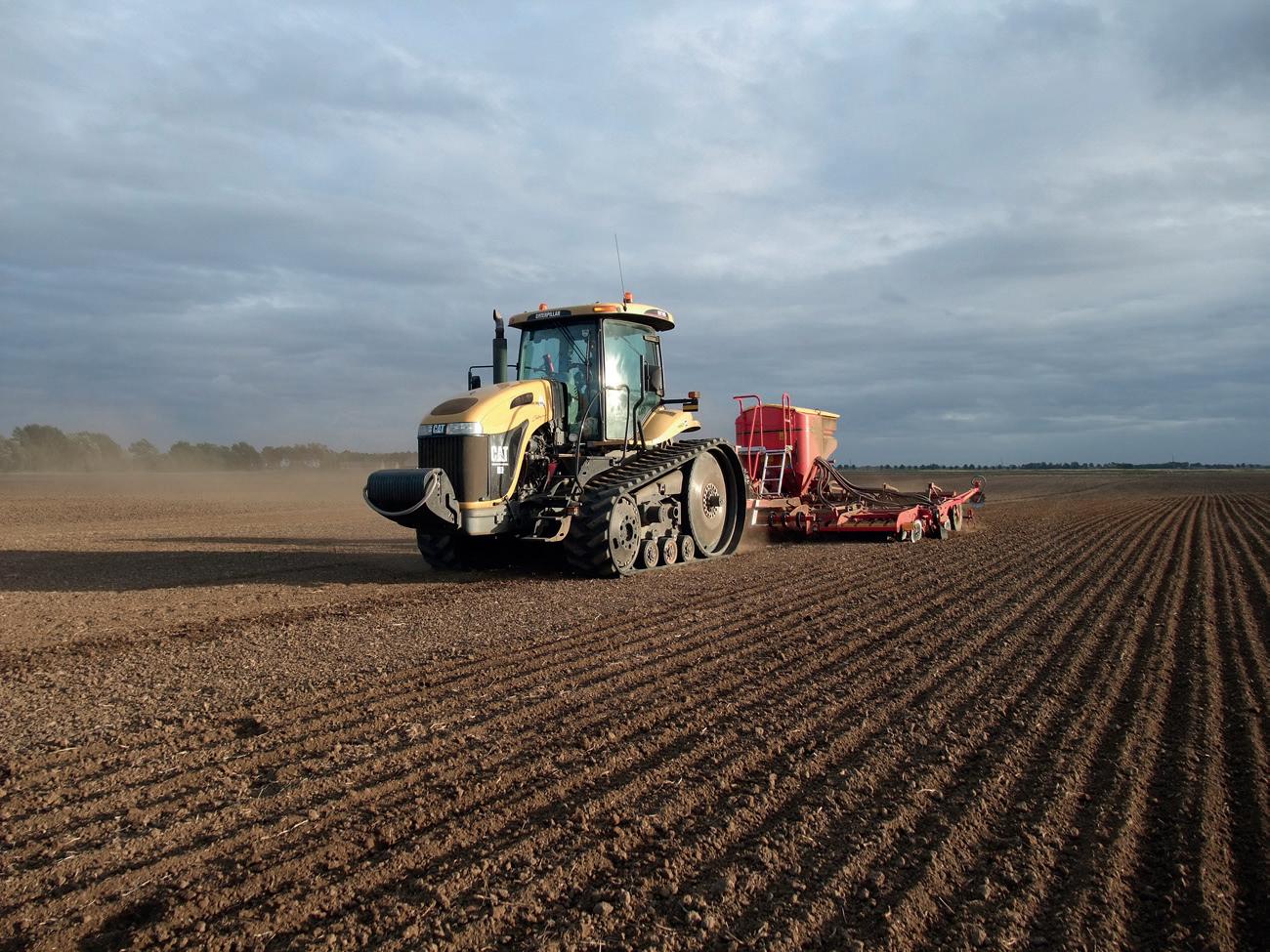
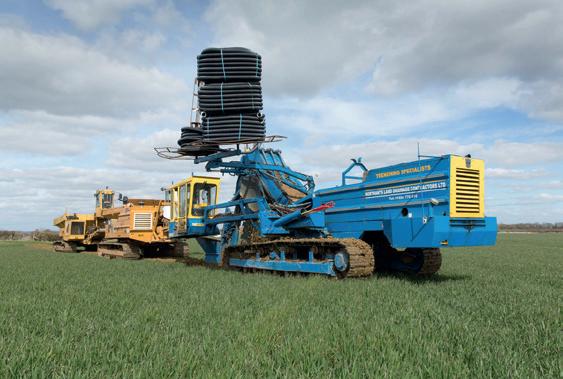
Speakers included Water Resources East managing director Daniel Johns,
consultant Lindsay Hargreaves, Norfolk farmer Will Jolly, and Andy Turner and Tom Schnetler from the Environment Agency.
The event highlighted the size of the challenge, which is exacerbated by climate change. By 2050, the region will need a further 444 million litres of water daily with agriculture alone requiring 64% of that volume, said Mr Johns.
Water Resources East aims to create a regional plan for East Anglia which aims to help secure adequate supplies across different sectors. A public consultant on the organisation's draft plan closed last month.
Discussion sessions were chaired by industry experts including Jerry Knox of Cranfield and BAWAG technical director Steve Moncaster. Anglian Water attended to look at the potential benefits that could arise for the sector from its proposed reservoirs.
NFU National Water Resources Specialist Kelly Hewson-Fisher organised the event with regional colleagues. She said: “The aim of the conference was to bring members up to date on the challenges that lay ahead on water availability.
“We’re aware the impacts that cli-
mate change could bring and we hear the phrases of warmer and drier summers and wetter winters but what does that mean in terms of water availability and what are the impacts on individual businesses?”


Challenges also lie with regulation. Ms Hewson-Fisher said it was important licence holders reviewed their abstraction licences to ensure they continued to meet the business requirements and looked at opportunities to build resilience.
Water Resources East is continuing to develop a landscape-scale integrated water management strategy with Anglian Water, the Environment Agency and other key stakeholders across the Fens.

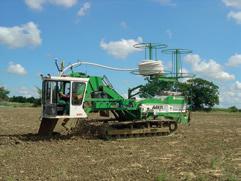


Sitting at the heart of this overall strategy are two new proposed reservoir systems – one in the south of Lincolnshire near Sleaford, and the other near Chatteris, Cambridgeshire. The reservoirs are linked into the network of internal drainage board assets and main rivers, using high and excess flows as potential sources of water for the reservoirs.
Combined with potential new barrages on the large rivers systems, this overall vision has the potential to drive enormous economic, environmental and social benefits which will be felt right across the WRE region.
This will also support the delivery of the Specific Fens Measure in the EA’s new National Flood and Coastal Erosion Risk Management (FCERM) Strategy and it will be a key element of the proposed UNESCO Fens Biosphere designation.
The existing multi-sector South Lincolnshire Water Partnership is being joined by a new Fens Water Partnership, ensuring that the design of both reservoirs delivers the maximum possible benefit for people and the environment.

The Lincolnshire Reservoir and Fens Reservoir and associated transfers are advanced in their outline design. They are both defined as Strategic Regional Options and have funding via the Regulators Alliance for Progressing Infrastructure Development (RAPID).

Anglian Water water resources



strategy manager Geoff Darch said the project would build on decades of infrastructure investment. “To keep taps running in the future, we’ll need more water storage in our region, in the form of new reservoirs.”
Plans for the reservoirs were developed over 10 years, with the water company sharing the findings of a detailed site selection study last autumn in what was the first of a multi-phase consultation on the proposals.
Mr Darch said: “Following a thorough and multi-stage site selection assessment process, assessing a wide range of criteria, we have now identified the best performing locations.

Hr added: “We think it’s right those who are potentially most affected find out first and have the opportunity to ask us any questions about what this might mean for them.”
The project would help secure water supplies for future generations, so Angl;ian Water could address the challenges of a changing climate, environmental protection and population growth.
Important to review abstraction licences
“
Abstracters should check their licences, says Kelly Hewson-Fisher








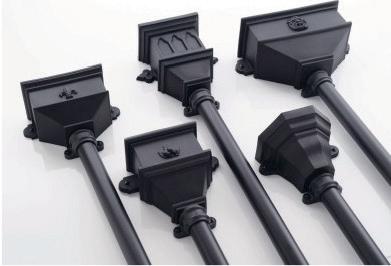

Farming needs a strategy to ensure that irrigated agriculture receives a fair share of the nation’s water resources, says a report.
Fresh water is at the heart of agriculture and horticulture – and it must be used in a sustainable and efficient way, says the document published by the UK Irrigation Association.
“Most crops grown in the UK rely on natural rainfall and our country is generally perceived to be wet,” it explains. “But rainfall varies significantly across the country, both seasonally and annually.
“Some regions are much drier than others, and here supplemental irrigation is essential to increase crops yields and meet quality assurance standards for processors and retailers.”
Beyond the farmgate, food producers who rely on irrigation are serviced by many other businesses which provide equipment and farm supplies, post-harvest processing and packaging, marketing services, transport and distribution.

Water is at the heart of this industry, arguably one of the most sophisticated food markets in the world. Yet, nearly three quarters of the water volume licensed for spray irrigation is located within catchments that are experiencing severe levels of water stress.
Recent droughts and the longer-term threat of climate change – with hotter, drier summers, reduced water availability and increasing water demand – will only heighten concerns about the reliability of future supplies for irrigated agriculture.
During periods of water shortage, domestic use, industry, and the environment generally take precedence over farming, says the report. Coupled with other uncertainties, many farmers are reluctant to invest in irrigation infrastructure for the long-term, it warns.
“Droughts and water scarcity also threaten the sustainability of irrigated farming and the rural livelihoods it supports,” says the document.
“The government is encouraging the food and farming sector to increase productivity through sustainable intensification and to expand markets both nationally and internationally.
“There is significant potential for growth and opportunities for improving the rural economy, but uncertainty over future water supplies: availability, reliability and quality, will all have important consequences for irrigated farming.”
“This may act as a disincentive or con-
The agrifood industry is the UK’s largest manufacturing sector and over 6,600 food and drink businesses source their produce from UK farms. This industry is:
• Worth £112 billion to the economy (8% of total)
• Employs >3.6 million people (14% of total)
• Accounts for 19% of the UK’s total manufacturing turnover
• Buys two-thirds of the UK’s agricultural and horticultural produce
• Adds £4 in food processing, wholesale, and logistics, and a further £5 in food and retail catering Gross Value Added (GVA) for every £1 of primary production
straint on future growth and investment.”
As we have seen this winter, the UK relies on importing more than 50% of its food, including potatoes from Israel, tomatoes from Morocco, citrus from South Africa and strawberries from Spain.
When water shortages threaten homegrown production, wholesalers, supermarkets, and food service sectors may switch to sourcing from other countries which exacerbates the risks faced by home producers.
“By importing irrigated produce, we are also exploiting water resources overseasin effect, we are exporting our environmental problems to other countries that may be less able to manage their water resources and climate risks.”
Imports may also increase food costs and bring risks of new pests and diseases into the country. Some imports are inevitable because consumers expect to buy out-of-season fresh fruit and vegetables, says the report.
But it asks: “Can we afford to continue relying so much on imported food? Producing fresh fruit and vegetables in the UK requires much less water than growing simi-
lar crops in countries we rely on for import.”
Today, irrigated farming faces unprecedented threats from water scarcity, driven by competition from other water users, over-abstraction and over-licensing in some catchments, changing water regulation, climate change, and drought.
Since the aftermath of the 1976 drought, a strategy for irrigation has been neglected – despite the record-breaking hot summer of 2022. It is now timely for the sector to set out a vision for the future, says the report.
“This strategy is the next step towards supporting continued abstraction for irrigation, recognising its importance to sustaining the rural economy and the farming landscape, and how it helps to underpin the wider agrifood industry as a primary producer of food crops. “The strategy recognises that freshwater resources are limited, particularly in the drier parts of the country, opportunity costs are high, and water is much in demand for public water supply, industry, power generation, the environment, and for amenity.” For more information, visit www.ukia.org
Irrigation adds value and helps feed the nation

Farmers should use Environment Agency inspections as an opportunity to receive advice on making improvements to protect watercourses, says the NFU.
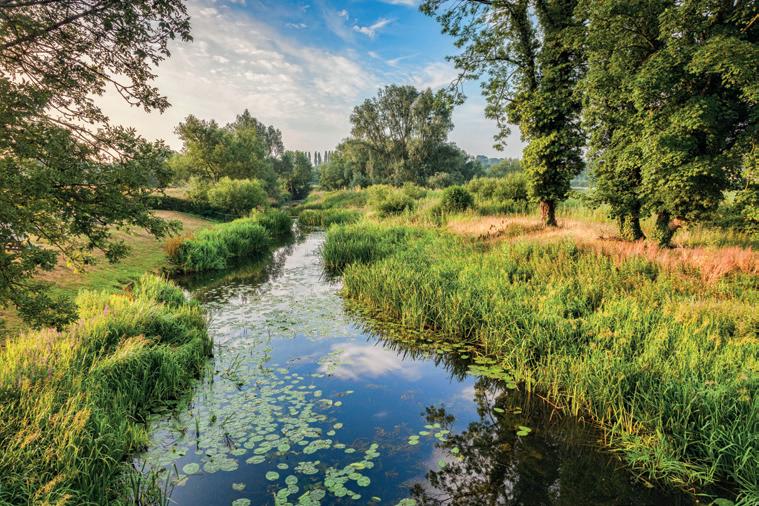
Receiving an unexpected letter from the Environment Agency can be concerning, says the union. It says it wants to help members make an inspection an opportunity to receive advice on making improvements where possible.
The agency has been working to increase its inspection rates for agriculture. It has employed an extra 84 officers to undertake more farm inspections and provide support to farmers in protecting the environment.
As part of this expanded coverage, the agency says it has been focusing on de-
livering an advice-led approach that aims to help farmers make improvements, rather than seeking prosecutions.
The NFU has been working with the agency so farmers can best prepare themselves for a visit. This approach, in coordination with Catchment Sensitive Farming, has helped deliver benefits to farmers across England.
Inspectors check farmers are complying with environmental regulations, including those controlling slurry, silage, nitrate, and diffuse pollution. Farms are chosen for a variety of reasons, usually due to concerns over the water quality in the local rivers.
Being selected for an inspection doesn’t mean you’ve done something wrong, says the Environment Agency. Many farm inspections that take place, are selected on a risk basis, rath-
Farmers, watercourses and the environment have benefited
er than because of anything untoward.
The agency says it continually monitors main watercourses with high or increasing nitrate or phosphate levels. All farms in a river catchment could be visited with farmers advised on potential pollution issues or ways to improve farming practices.
“We are not here to catch you out,” says senior agency officer Karen Price.
“We are here to help you understand what the regulations mean, assess if you are complying with them and, if you aren’t, to work with you to make changes to protect the environment and reach compliance.”

Water company Severn Trent is offering free trees to landowners who want to help plant a 2,022-acre forest follow ing the Birmingham 2022 Common wealth Games.
The company committed to plant ing the Commonwealth Games fol lowing the games last year. The offer is open to landowners with between up to 2ha (5 acres) across the Severn Trent region.
The water company is asking in terested landowners to get in touch by the end of March to access the offer. It will see Severn Trent assist with preplanting planning and maintenance costs over 10 years.

Severn Trent was the Official Nature and Carbon Neutral Partner of Bir mingham 2022. It will provide a desk top assessment of an applicant’s land before drawing up a tree planting plan – including trees in keeping with the area they will be planted in.
More than 14.5 million bird places in the UK, 87 million in Europe and 137 million hens worldwide in NATURA – the flexible modular system.
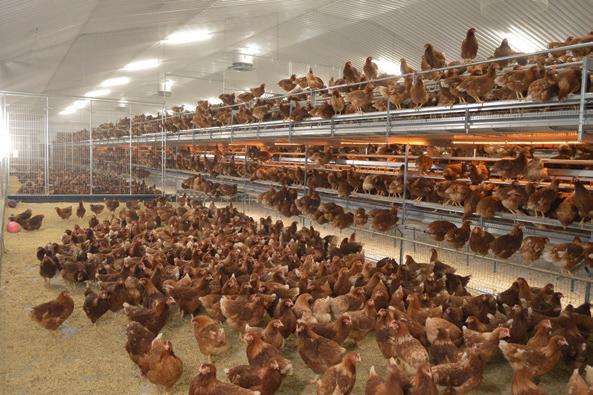

Animal health experts say farmers should secure clostridial vaccine supplies as soon as possible in the run-up to spring lambing and calving.
Supply issues for some clostridial vaccines to protect youngstock from birth are being seen according to Farm SQP of the Year Elizabeth Barratt from Mole Country Store, who urges farmers to plan ahead.
“We are seeing supply challenges with vaccines,” says Ms Barratt.
Although there are stocks of vaccines, I would suggest speaking with your animal health advisor about when you need to vaccinate, how many you need the vaccine for and discuss any alternative options available if you can’t get your required vaccination.”
youngstock via colostrum when pregnant animals are given a booster 2-8 weeks before calving or lambing. Ideally, Covexin 10 should be given to animals in two doses 4-6 weeks apart in their first grazing season. Thereafter, all animals should receive an annual booster, explained Ms Barratt.
Supply issues
Clostridial diseases vaccinations are among the highest priority vaccinations for beef and sheep, according to recently published vaccination guidelines from the National Office for Animal Health (NOAH).
increased risk if vaccine boosters have been missed. While some supply issues remain, farmers should be able to secure what they need if they acquire their stock in good time.
We
are seeing supply challenges
This means herds and flocks should be vaccinated as a default unless appropriate justifications have been clearly identified by the vet and farmer working together, says Zoetis vet Ally Ward.
“Vaccine supply issues over the past year may mean livestock are at
“Death from clostridial diseases is still a reasonably common cause, which is frustrating when there are relatively cheap vaccines available to protect livestock. The first time many farmers realise there is a problem is when they find a dead animal,” she warned.
All unvaccinated livestock is at risk of clostridial diseases, with clostridia bacteria widespread in the natural world, including in soil, rotting vegetation, decomposing animal matter, surface water and spoiled animal feed.
'Don’t overreact to rumen fluke figures'
The inclusion of rumen fluke figures in faecal egg count sample results isn’t necessarily a cause for concern, say experts.
The Sustainable Control of Parasites in Sheep (SCOPS) and Control of Cattle Parasites Sustainably (COWS) groups have been working hard to encourage livestock producers to use FECs to monitor liver fluke burdens in cattle and sheep.
The internal parasite is becoming increasingly unpredictable – but monitoring has brought rumen fluke under the spotlight too. The groups are keen to ensure this does not lead to unnecessary treatment of rumen

Diana Williams of Liverpool University, sits on the COWS steering group. “Many farmers and their advisers are, quite rightly, looking at FEC sample results at the current time,” she says. “This is an important element within active liver fluke monitoring.
“Increasingly, laboratories will record the incidental presence of rumen fluke eggs in faecal samples, but this does not indicate a need to treat. A positive egg count only indicates the presence of adult rumen fluke in the rumen.
“On the very rare occasions that disease is caused by rumen fluke, it is due to large num-
bers of immature rumen fluke in the duodenum. There are no specific diagnostic tests for immature rumen fluke, and they would be negative on faecal egg count.”
The detection of rumen fluke eggs only indicates the presence of adults in the rumen, reiterated Ms Williams. In the majority of cases, it did not indicate any production loss or need to take action.
Liver fluke remains the more important of the two fluke parasites. Co-infections of liver fluke and rumen fluke are common, but any treatment should focus on the presence of liver fluke.
Using a bedding sanitiser to help maintain rigorous hygiene standards could reduce mortalities in the lambing shed.
The first 24 hours of a lamb’s life is the most crucial for survival – and the risk of mortalities is at its highest during this time, says Matthew Bell, business development manager for Timac Agro.
To help combat this, Mr Bell says sheep farmers should use a bedding sanitiser into their housing management protocols at lambing time. A disinfectant-free drying agent such as Actisan 360 can hold three times its own weight in moisture, he adds.
“This is important because during lambing, bedding can get damp very quickly, which is a rapid way for a lamb to get cold. A lamb moved into a damp
pen, with its navel still wet, can be more susceptible to picking up infection.”

Breeding ground
Damp bedding can also be a breeding ground for bacteria – causing diseases like watery mouth, joint ill, septicaemia or mastitis in ewes. A sanitiser can keep bedding dry for longer, while creating an unfavourable environment for harmful bacteria.
Aninfectiousbacterialdiseasethatcan kill newborn lambs usually within the first three days of life, the bacteria that cause watery mouth multiply very rapidly in the gut. Without treatment, affected lambs die within hours.
“Farmers want to try to encourage good bacteria that have probiotic properties, as this supports a lamb’s immune function and antibody levels,”

says Mr Bell. A clean, dry environment for lambs and ewes will pay dividends in the long run.
A small amount of bedding sanitiser goes a long way and adds: “You only need 50-100g per pen, or 100g/m², depending on the population density. On top of keeping bedding drier for longer, this can also help bedding to last longer and go further too.”
MOBILE FEED MILLING AND MIXING SERVICES FOR ALL BREEDS OF ANIMALS AND POULTRY

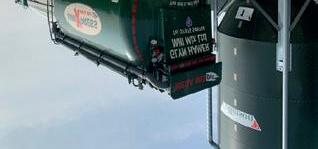
WE PROVIDE MOBILE FEED MILLING AND MIXING SERVICES FOR ALL BREEDS OF ANIMALS AND POULTRY, FROM STRAIGHT ROLLED CEREALS OR HAMMERMILLED PULSES TO COMPLETE MIXED RATIONS AND FEED BIN TRANSFERS.
With numerous suction and discharge options including directly into feed bins or separate bunkers, we are able to provide an efficient, traceable and consistently high standard of service for our customers.
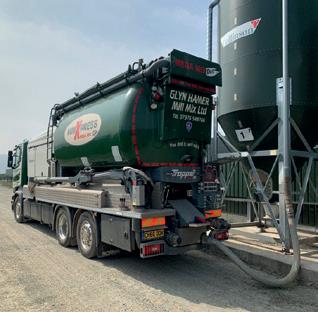

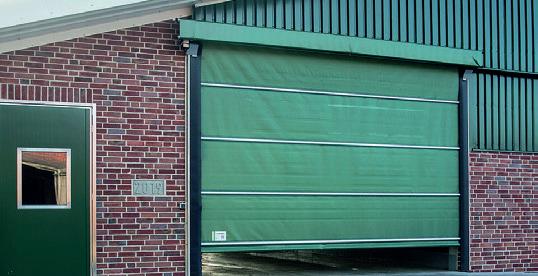
Based in the West Midlands we run a fleet of modern ‘Tropper’ machines specifically built for precise mixing and accurate weighing operated by our experienced, friendly drivers.
To discuss your farm’s requirements please give us a call on:

James - 07584 582 598
Glyn on 07976 548766 / 01568 750 183
E: info@glynhamermillmix.co.uk
W: www.glynhamermillmix.co.uk
Healthy lambs mean better productivity and healthier margins

Beef and dairy herds could benefit from supplementary trace elements before and after calving this spring.
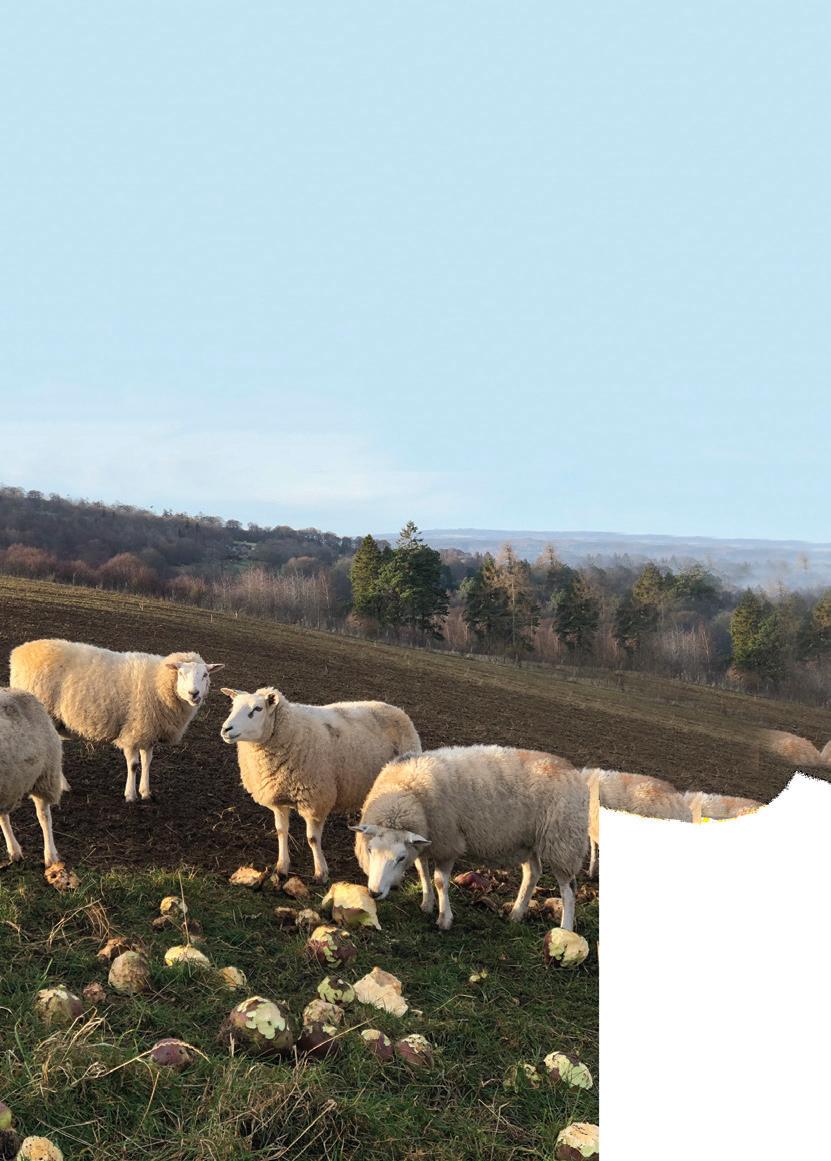
Most foetal development takes place in the eight weeks to calving. Supplementation of essential trace elements and vitamins during this period can help support adequate growth, health and reproduction of both the dam and her calf.
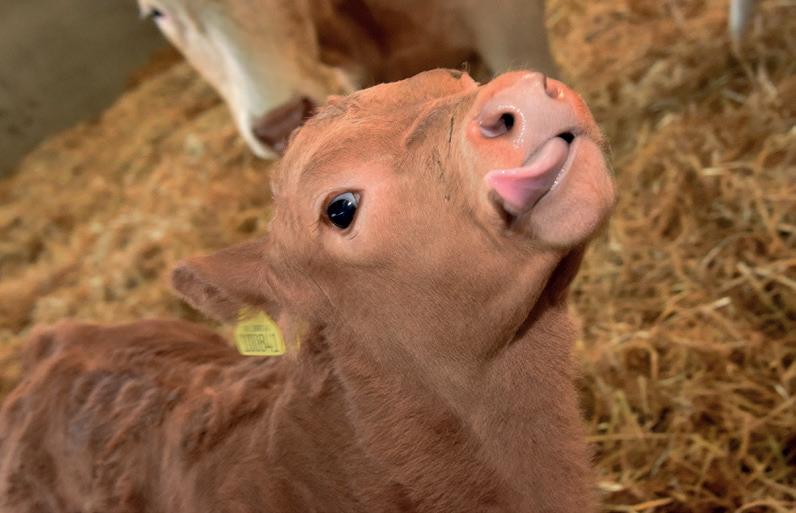
“For dams, the balance of these nutrients will reduce calving issues, aid in quicker recovery after calving and support hormone production for better conception rates,” says Emily Hall, product manager for Nettex.
Immune system
“Unborn calves will optimise growth and development and have support in developing a healthy immune system.”
The addition of EnduraBol PreCalver and EnduraBol High Iodine to Nettex’s EnduraBol Cattle bolus range means cattle farmers have new options for their trace element supplementation programmes.

EnduraBol Pre-Calver consists of two boluses that provide a sustained release of six trace elements and three vitamins for up to 120 days. Nutrients include high levels of copper, zinc, iodine, cobalt, selenium, manganese and vitamins A, D3 and E.
EnduraBol High Iodine contains high levels of copper, zinc, cobalt, selenium, manganese and vitamins A, D3 and E, and has an average daily supply of 17.60mg of iodine to overcome likely deficiencies.
“Iodine is not stored within the body, so a continuous supply from the diet is required for normal production of the thyroid hormones, which control energy metabolism and metabolic rate,” says Ms Hall.
“If deficient, calving can be delayed and slowed, calves can have poor vigour and the risk of still-births increases,” she adds.
“Pastures and forages are often deficient in iodine, while brassicas and legumes contain compounds that block iodine absorption – therefore requiring a higher level of supplementation in some circumstances.”
Using a bolus rather than a drench means trace elements are delivered slowly and consistently over time – enabling the animal to optimise absorption over a longer
period, says Ms Hall.
“Drenches provide a large pulse of nutrients in a short amount of time that won’t be fully absorbed and feeding has varying intakes which often result in deficiencies spotted throughout the herd,” she says.
Calves benefit when dames receive trace elements prior to calving
• Consider more resilient grass varieties
• Drought summers more frequent
• Fescues better for deeper roots
Over-reliance on fast-growing ryegrass varieties that head quickly and then deteriorate rapidly could be contributing to forage shortages experienced by many growers.
Grass mixes based on high yielding but shallow rooting varieties are popular with milk producers wanting to maximise silage yields. But they could be doing the exact opposite says Jim Juby of forage specialists Horizon Seeds.

“Apart from the odd difficult year, ironically largely because of high rainfall in spring and early summer, ryegrass-based grazing and silage mixes have been the backbone of grass production over the last 20-30 years.”
Much of the conventional approach to grassland management has been based around these types of mixes with multi-cut silage probably being the most extreme example of how their characteristics can be utilised to the full, says My Juby
“But the last five years have signalled the start of very different growing conditions for grassland in the UK with climatologists large-
ly agreeing conditions typified by earlier summer droughts will be more common in the future.
“With that in mind, producers in the worst hit parts of the country would be well advised to think if their choice of grass varieties is now contributing to their problems and, if so, how they could adjust this to add greater protection against climate risks in the future.
“For many years we have been encouraging the more livestock-focused farmers to consider fescues in their mix as they are a lot more accommodating if your management is not always spot on.
“But now with other factors in play such as drier conditions, fescues, festuloliums and other more persistent grasses have valuable properties for all producers wanting to build greater resilience into their productio
Big advantages
Deeper roots, extended heading periods and a longer time after heading before plants deteriorate significantly are just a few significant advantages, according to Stuart Eglington of Horizon Seeds.
“The roots of ryegrass typically don’t extend much beyond the first six inches of soil and without regular rainfall they are unable to reach the vital ground water further down the soil profile.
Fescues and festuloliums on the other hand put deep roots down, says Mr Eglington. While they might be slower to establish, they keep growing unchecked in extended
valuable when you consider the types of year we have had recently.
“You can easily get two to three cuts of fescue-based swards even in fairly droughty years – in stark contrast to last year when many producers took a first cut and that was it until they were able to take a couple of cuts in the autumn, which ended up saving many.”

Fescues and festuloliums also head over a longer period and take longer to deteriorate than ryegrasess, says Mr Eglington. They are easier to manage, particularly if bad weather or other factors mean grass can't be cut at the optimum moment.
“A high yielding ryegrass can be almost like straw within a week of heading whereas as a good fescue will probably take up to four weeks to reach the same stage. In good grass growing area a fescue-based mix should produce 60-70% of a ryegrass based one.
“But the gamble is are you better of being able to rely on this every year than lose everything in the years when the more variable conditions, that are becoming more common, really take hold.”
Edward Finney
















































A family-run business for over 50 years, offering an excellent service. We supply high quality, heavy duty Sheep Handling Gates, Mobile Cattle Systems, Mobile Sheep Handling Systems, Stockyards and Calving Gates at competitive prices, delivered Nationwide.

















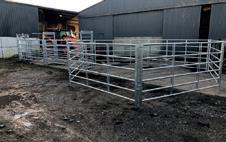






TIMBER

CARBON UNITS
WOODFUEL


LEISURE ACTIVITIES
IMPROVE SOIL QUALITY
SUPPORT BIODIVERSITY
NATURAL FLOOD MANAGEMENT
PROTECT CROPS & LIVESTOCK
• Good advice vital for growers
• Need to generate farm profits
Independent crop consultants are set to play an increasing role in maintaining farm productivity and profitability over the coming dec ade, say experts.

Arable businesses face a period of huge change, says agronomist Charles Garrard, of consultants Ceres Rural. This includes the phase-out of direct payments which have formed the bed rock of farm support for almost 20 years.

The phase-out of the Basic Payment scheme is just one of three challenges faced by growers, Mr Garrard told a re cent annual technical conference host ed by the Association of Independent Crop Consultants (AICC).
2021, with payments halved by 2024 and gone completely by 2028.
Volatility is also a major test, said Mr Garrard. Unpredictability is now embedded in our climate, politics and commodity and input prices, and this is unlikely to change for the foreseeable future due to world events.
Compounding these two factors is the drive towards net zero. It has prompted action right through the supply chain from field to fork to reduce greenhouse gas emissions and their impact on the environment.
Alternative incomes
“We will be under scrutiny to produce more from fewer inputs, including bagged fertiliser, and pressure from policy will propel that change and drive farms to look for alternative incomes,” explained Mr Garrard.
Forecasts suggest that the land used
A big increase will also be seen in woodland and agroforestry, forecast to increase from 13% to 19%. Some of these land changes are, in part, driven by net zero aims.
New incentives as part of ELMs, which include Landscape Recovery, Sustainable Farming Incentive and Local Nature Recovery are also leading to noticeable changes to the UK’s farming landscape.
This is against a backdrop of relatively poor farm profitability, based on data from Farmbench – AHDB’s online benchmarking tool that allows farms to compare performance to similar business.
Mr Garrard pointed out that only the top 25% of growers are making money from all crop enterprises, with the middle 50% only in the black on major crops like wheat and oilseed rape. The bottom 25% are not doing well at all.
However, arable producers generally had a good year in 2022, when yields of winter crops were average and commodity prices high.
“With an increasing working capital requirement for our farm businesses and generally higher input costs going forward, these underlying profitability issues won’t be masked much longer,” said Mr Garrard.
The challenges and the subsequent changes to the way farm businesses operate are going to require the best
More farms will need additional income to remain profitableContinued from previous page
technical advice and Mr Garrard said organisations like AICC are already well-placed to offer that.
But there will also be a need for an evolution of the agronomists’ skills, with embracing new digital technology to support decisions and helping implement different and more complex systems will likely be required.
Along with the evolution of skills, there is also likely to be an increased emphasis on crop consultants to provide detailed management as businesses become larger and more diverse post-BPS.
This will involve giving direction on all aspects of running a modern arable unit – or bringing in the right associates to help navigate specialist areas – to keep it productive and profitable.
“As independent advisers, we have a greater willingness to find these solutions for our businesses and we will be required to give greater input in the future.
“I think the evolving and nextgeneration of agronomists will need a great depth and breadth of knowledge, have an ability to spot opportunities on holdings and embrace innovation,” explained Mr Garrard.
Good communication
Communication is paramount, he continued. Regular dialogue leads to a greater understanding of a client’s expectations and attitude to risk – an area which can help the independent sector continue to pick up business.

In recent seasons when yield potential has dipped due to unfavourable conditions,some growers have been disgruntled that the advised input spend has not dropped at a similar trajectory.
Mr Garrard concluded that the area-based model that underpins most agronomist-client relationships may also need to change as the adviser’s repertoire expands.
He sees that walking charge will still exist but urged AICC members not to undervalue their importance to a business. “Some will have been with clients for many years and have extensive knowledge on the holding.
“This allows them to advise both on the arable side and on strategic issues, so I see a hybrid system where there is fees are charged on a per acre basis and an hourly fee for key strategic consultancy offered to farmers.”
Farmers are being urged to safe guard lives – and livelihoods – when working with hay and straw bales.
“With barn activity increasing dur ing the winter months, following safety guidelines is paramount,” said Rupert Wailes-Fairbairn, of rural insurance broker Lycetts.

Being struck by a falling hay bale was a leading cause of one in five farm ing fatalities in 2021/22, according to the Health and Safety Executive.
“In addition to the risks of fatal acci dents, failure to observe the stipulated stack and distance limits for haystacks could invalidate insurance cover,” said Mr Wailes-Fairbairn.
“If stack limits are contravened, such as being too close together, too high or
Fire remains a serious risk, says Rupert WailesFairbairn
undervalued, farmers face significant shortfalls in the event of loss, such as accidental fire or arson.”

Arson attacks
Some 532 fires were recorded at farm premises in England during 2021/22, 429 of them were accidental, and 103 were caused deliberately. It is imperative that farmers find out if there is a haystack limit defined by value rather than volume, said Mr Wailes-Fairbairn.
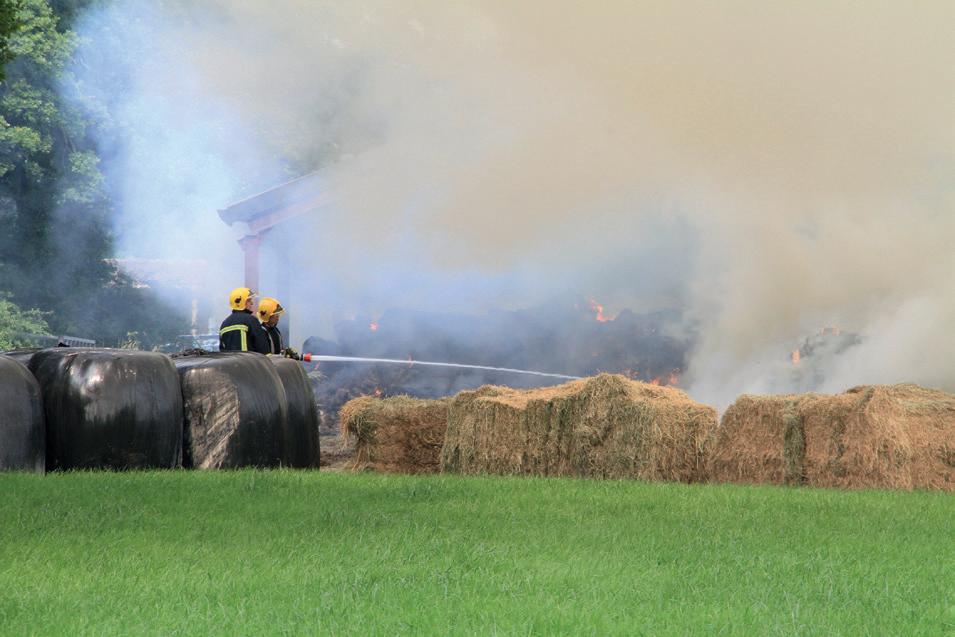
“If, for example, a stack with £60,000 worth of hay catches fire, there is a strong chance it exceeds the limit. Often there are distance limits written
into policies too, which is usually 20 metres, but this can vary.
“The best way to comply with the terms of a policy is to split stacks and keep them in different locations but checking the policy wording should be the first port of call. The stakes are too high and are certainly not worth the gamble.”
Risk management had an important role in mitigating the chances of fire. An abundance of combustible materials, threat of arson, risk of electrical faults in buildings and overheating in machinery are just some of the fire risks farmers face daily.
It is important to ensure appropriate insurance is in place, says WailesFairbairn. “We’ve encountered incidents of straw being stored in sheds that have been set alight and both the straw and shed have been underinsured.”
Simple measures could mitigate the risk of spontaneous fires. They include ensuring there are no naked bulbs or misplaced glass or mirrors near to haystacks, sufficient and accessible on-site fire extinguishers and having water bowsers nearby.
“Another risk to consider is that of children gaining entry to a barn and playing among the bales. They could suffer serious – or even fatal – injuries should bales fall.
“Keeping buildings locked and securing and maintaining perimeters can prevent unauthorised entry by children or arsonists.”
“Risk management is an often overlooked aspect of farming but taking precautions can help prevent accidents and financial losses.”
Farm fires – including those started deliberately –can be costly
High inflation and the cost of living crisis will continue to hit farm incomes throughout 2023, according to the latest AHDB Agri-market Outlook.
Damaging effects from inflation, suppressed economic activity due to reduced spending power and lack of flexibility in the
labour market will all affect farm business margins during the year, says the report.
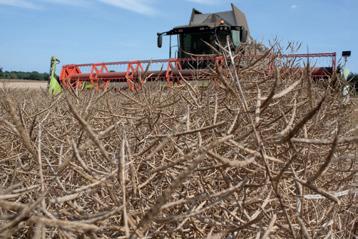
Among many sectors of the economy, farmers and growers will be particularly hard hit – facing higher input costs while simultaneously facing a price sensitive consumer market for food and drink.
AHDB economic strategist Sarah Baker said: “The main issue with inflation is it drives down the real rate of growth in an economy, erodes households’ disposable income and leads to more cautious spending patterns."
Coupled with rising input costs for farmers, the industry will face ongoing dual challenges this year. “As inflation subsides, it doesn’t mean that prices are dropping, rath-
er that they have stopped rising as quickly as they were before."
Living standards would take some time to catch up, depending on income growth, said Ms Baker. Consumer confidence – along with demand – would take some time to recover, despite inflation dropping as it is expected to during 2023.
Published twice a year, the AHDB’s Agri-market outlook examines the factors likely to affect farm businesses over the coming months, helping levy payers plan and budget for what may lay ahead.
The analysis features detailed market outlooks for each levy-paying sector covered by AHDB’s remit - beef & lamb, dairy, pork and cereals and oilseeds. The latest outlook also examines trends in farm business inputs and consumer demand.
Pork
Production forecast to decline by up to 15% year on year in 2023, driven by a reduction in clean pig kill in the first half of the year, following a significant drop in the breeding herd. A gradual recovery in the breeding herd is expected, with numbers predicted to increase by 7,000 head be-
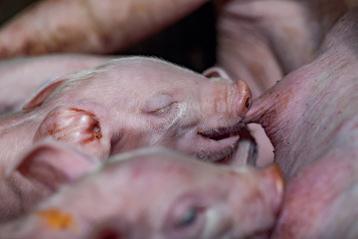
Beef
Production is to grow slightly in 2023 due to higher cattle availability, by an estimated 0.6%,. Consumption is set to ease by around 2% due to cost of living pressures. Imports are expected to fall by around 2%, driven by easing domestic demand. Exports could grow slightly by around 3%, reflective of the domestic mar-

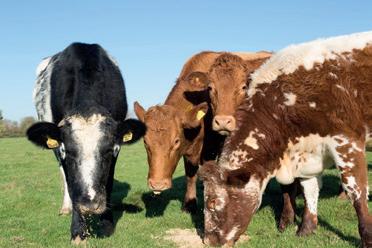
Farmgate prices are expected to decline in the first half of 2023. Milk ouput is forecast to record 0.3% growth in 2023. But there is some risk of a contraction if margins deteriorate. Despite some recent signs of lower inflation in agricultural in-
Despite an increase in domestic wheat and barley availability this season, global price strength continues to provide a support level for domestic grain values. Price volatility is expected to continue, with a finely balanced global supply and demand, and the war in Ukraine. Domestic winter crops for harvest 2023 are faring well, though fertiliser cost and application remain a key watchpoint.
Lamb
An increase in production is forecast for 2023, driven by higher carry-over and a broadly sta ble lamb crop Consumption is expected to weaken, linked to recessionary pressures and tighter consumer budgets. Imports are forecast to ease year on year, driven by weaker domes tic demand.

seed will slightly reduce the demand for imports. However, imports are forecast to remain historically high due to the UK domestic demand outweighing domestic production A sizable increase in area for harvest 2023 is forecast in reaction to the historically high prices over the past 18 months.
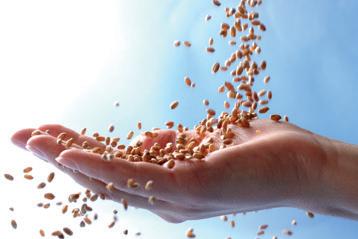
The general public have had food far too cheap for far too long. Without doubt and without appreciating or realising that food prices were – and probably still are – decided by the major supermarkets.
One big retailer has just reduced its prices on hundreds of items. Some are everyday necessities, others are luxury products. This supermarket wants to reduce its costs by up to 20 % – enough to win back some market share from cheaper discounters.
While this is good news for customers, it is not good news for farmers and suppliers. The last time I was in a supermarket my grandson was pleased to see his favourite crisp range was on special offer: selling for half its usual price.
I explained that the supermarket was perhaps not being over-generous. Instead, they had probably beaten down the price paid to the supplier. That way it was the supplier who lost out, rather than the retailer. My grandson questioned whether this would be the case. Surely the supermarket would not reneague on a price agreement? Surely not!
The UK's biggest supermarket is running at a 4% profit margin while other less popular – and smaller retailers – have margins that are even slimmer. Little wonder that one supermarket chairman claims suppliers

are profiteering by jacking up prices more than they need.
Some might say it's a valid claim. After all, soaring inflation means food is becoming more expensive, with a basket of goods increasing by more than 16% in some cases. But farmers are price takers, not price makers. It's not us making the money.
Out own NFU chairman agrees. Farmers and other suppliers have had to cope with rising input prices and a huge rise in electricity and gas prices. So who is right/ The supermarkets or the farmers? Are farmers really the bad guys in this war of words?
The NFU says no – and readily available ag-inflation figures show that many growers and livestock producers have been taking a big hit on farmgate prices.Yes, commodity prices have risen – but not enough to offset huge increases in input costs.
If out government is really interested in food security, it would find a way to promote homegrown produce and allow UK farmers to become more efficient and profitable. Instead, in my part of the world, a fair number of producers are scaling back.
The potato area here has been reduced due in no small matter to the cost of production and the cost to finance the growing crop. Major buyers are limiting contracts and instead buying on the open markets and sourcing from abroad.
Depending upon your individual circum-

stances, it has been suggested that it costs more than £250 to grow a tonne of potatoes. With growers receiving less than that in today’s market place it’s no wonder acres are being lost.
It is worrying to think that while food is in plentiful supply from beyond these shores, here at home nobody other than farmers and a few food fanatics seem to care. Maybe more people will come to their senses when domestic supplies have dried up and import prices soar.
Sadly, in today’s economic climate it’s hardly profitable to farm food. Hence why the majority of farms have other interests – rightly or wrongly, food production is often supported by an on-farm diversification or an off-farm job.
The government says it wants to support farmers. But undertaking environmental work rather than producing food. Yet it is still failing to provide enough information and cash for any of Defra's new environmental schemes.
It’s a wonder that farmers have the financial clout or enthusiasm to carry on. But carry on they do. It seems like a continual battle, although I have always been told that farming is a way of life without much financial reward.
Big retailers rule the roost, despite the Grocery Code Adjudicator who is meant to act as a supermarket watchdog. In my mind, the only answer is for farmers to work together and run their own supermarket. It has worked abroad, but has never been the case here.
It's not us making the money

